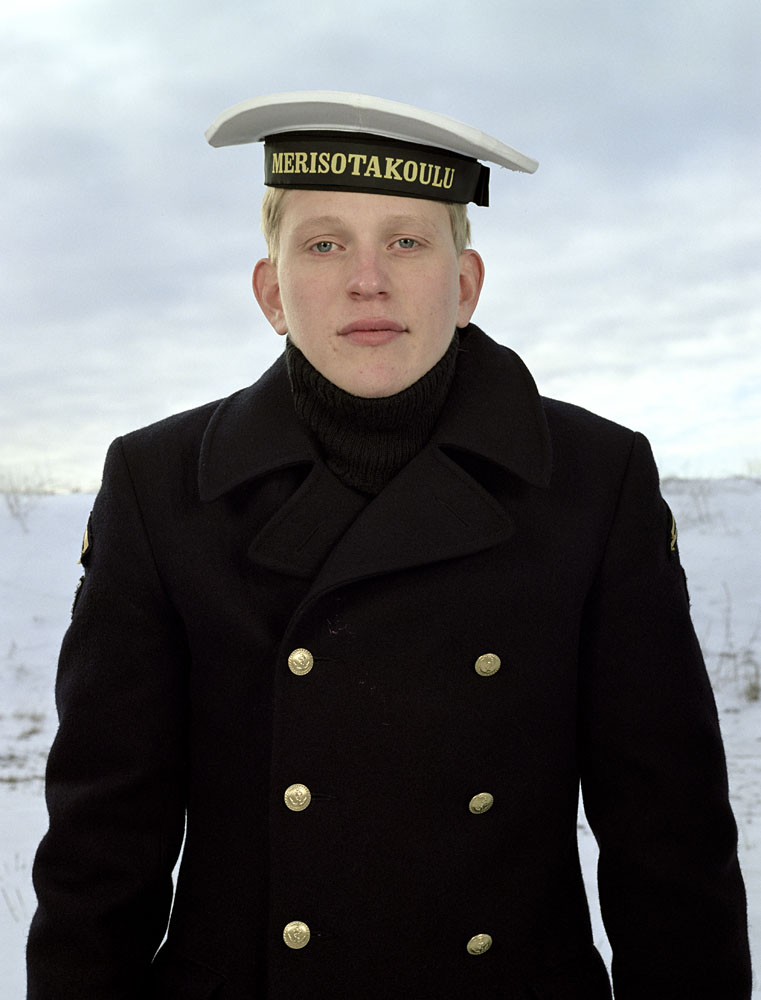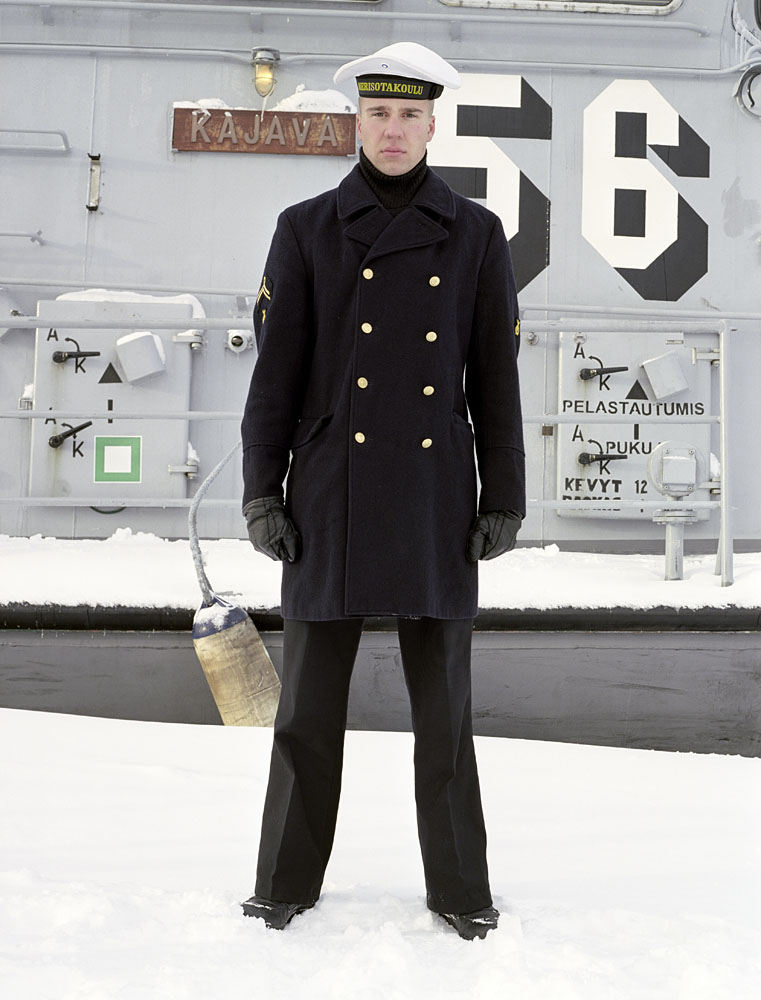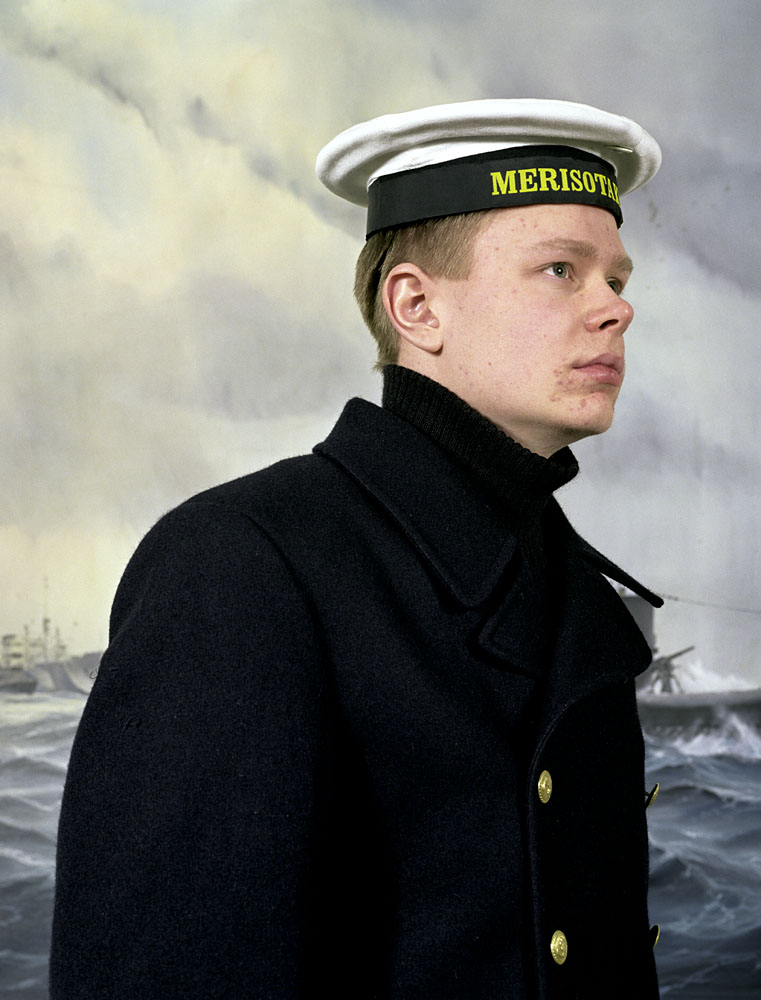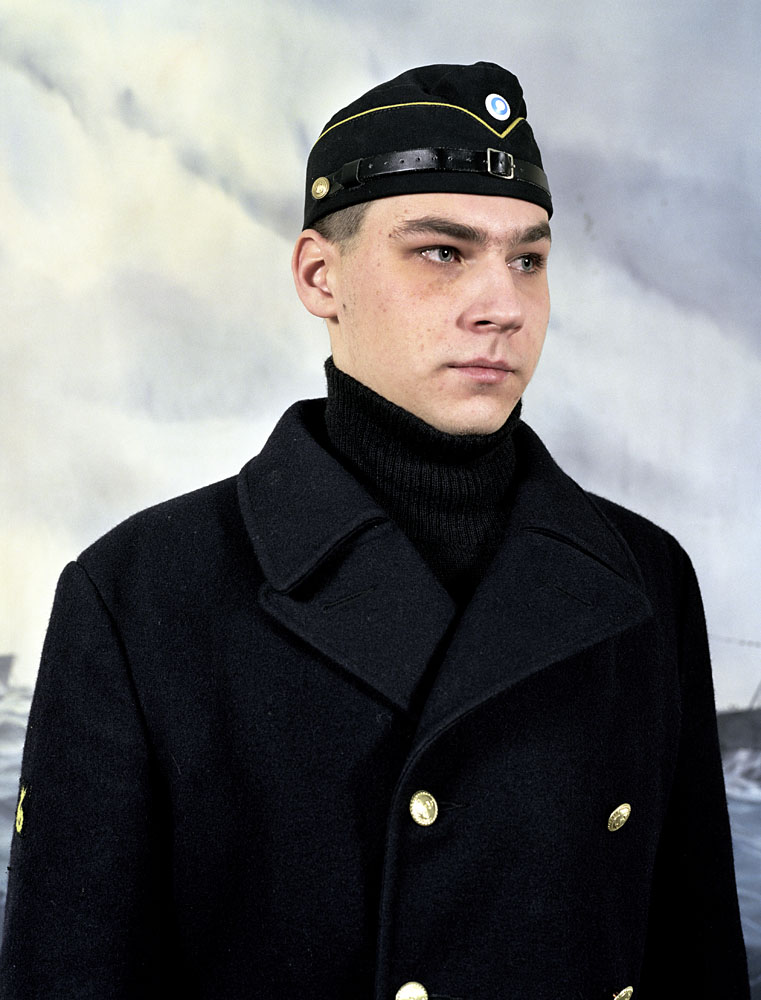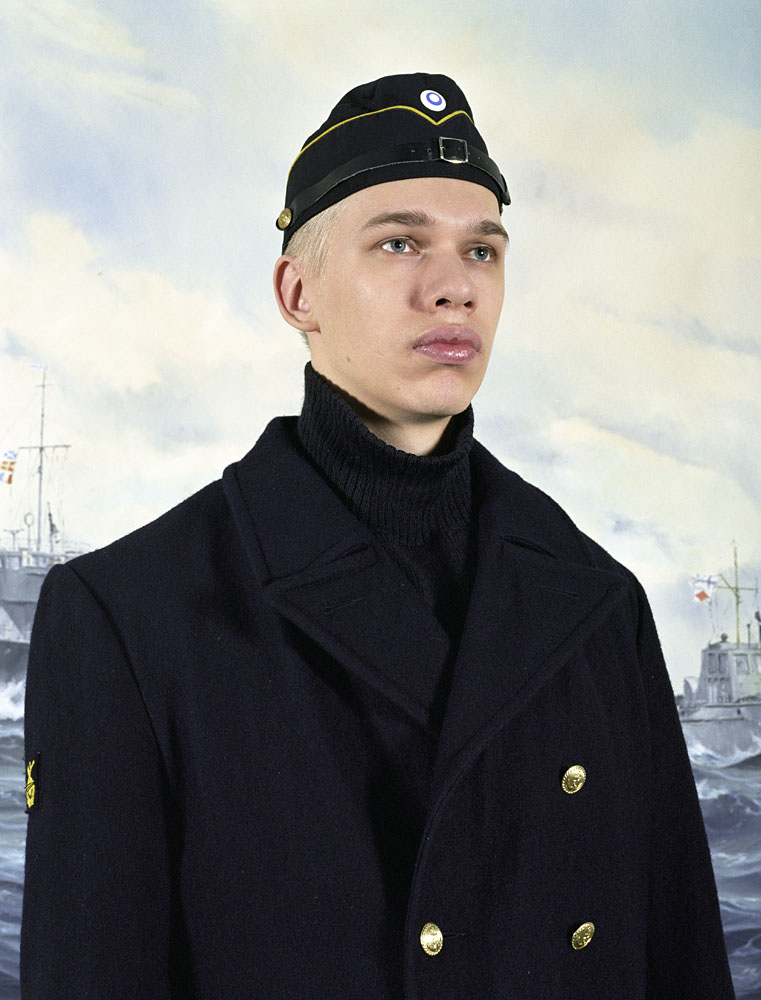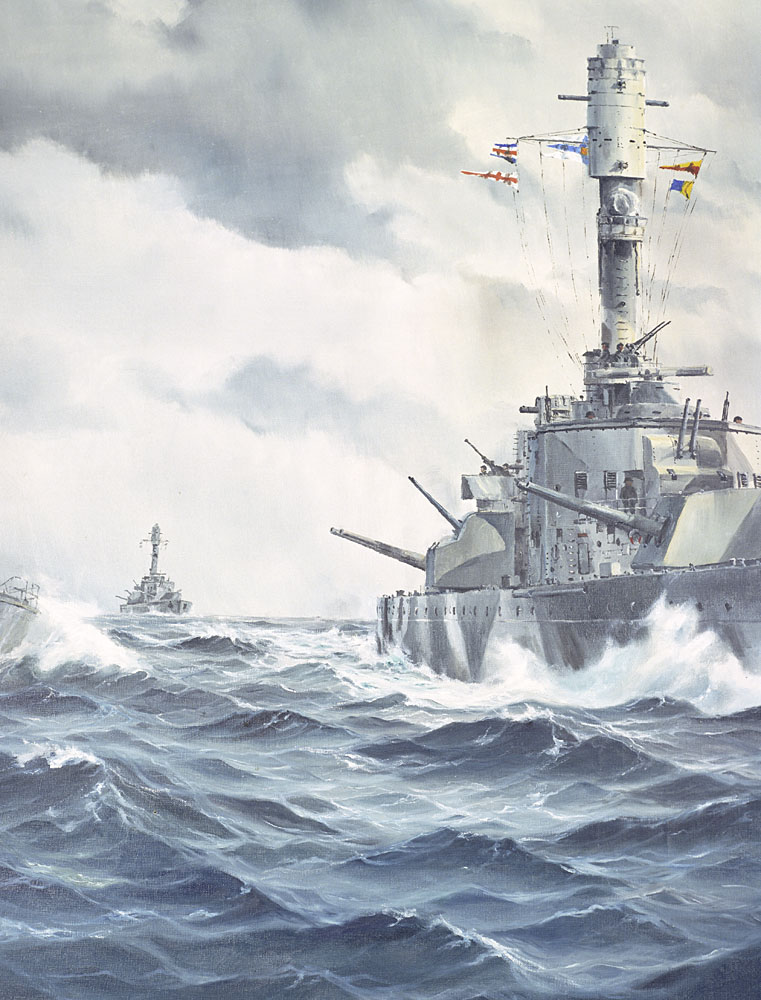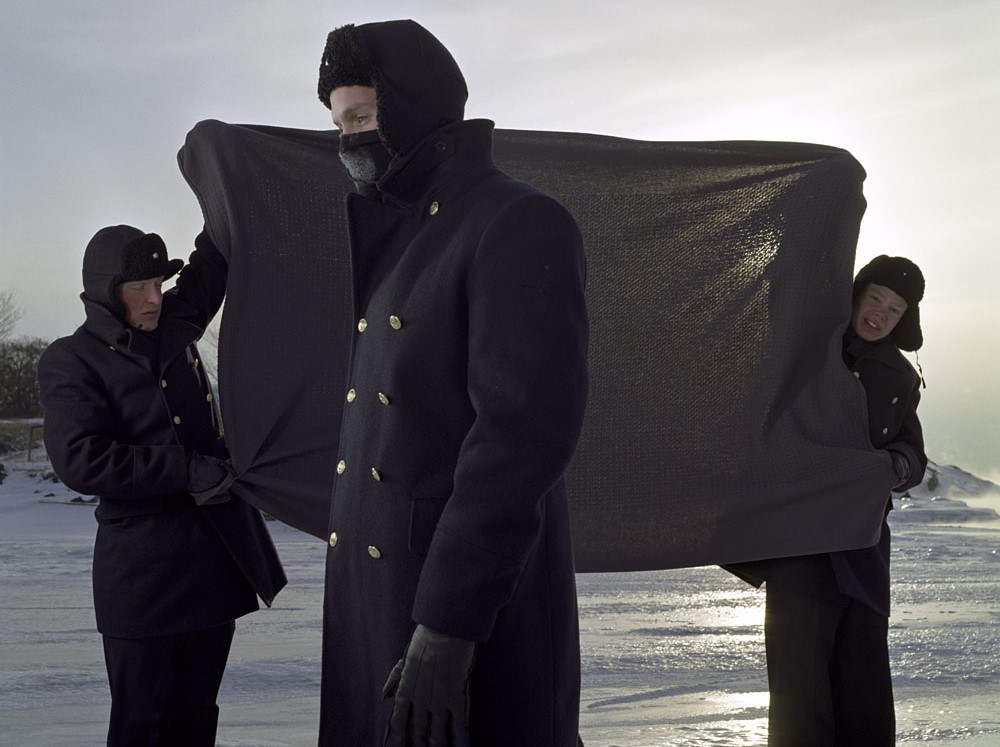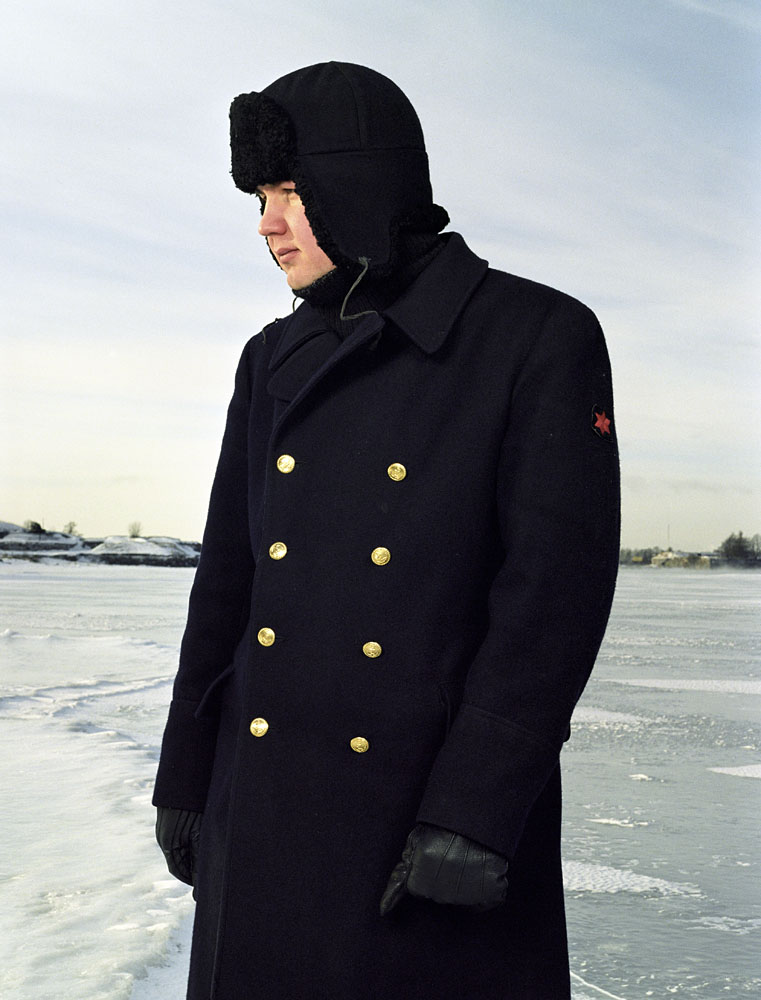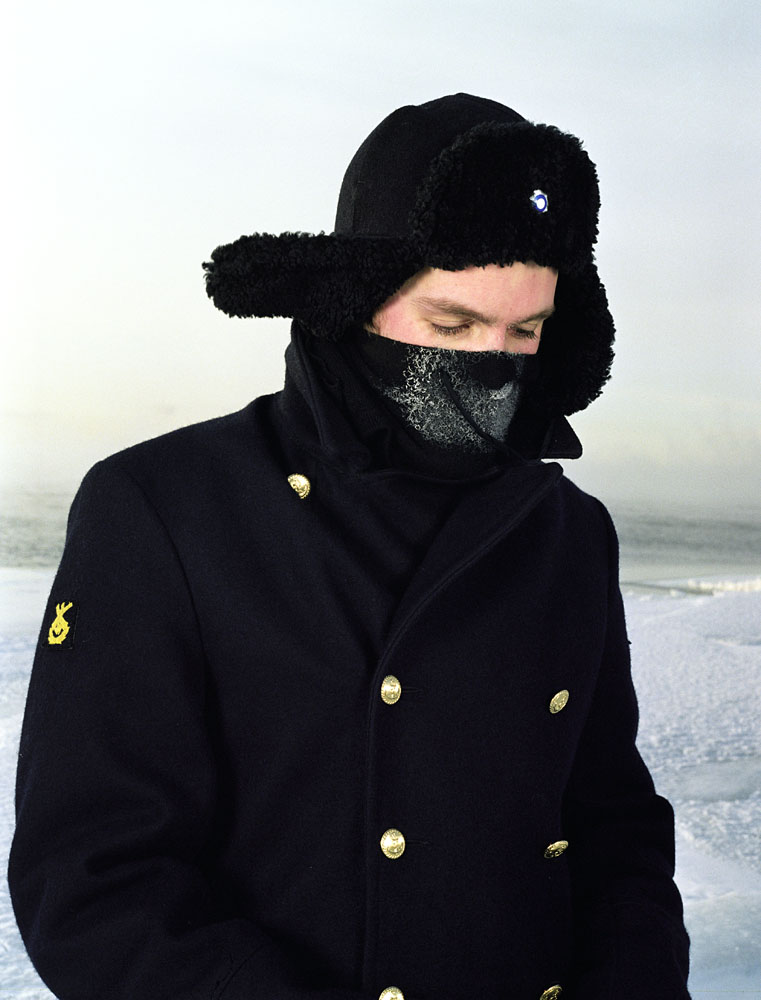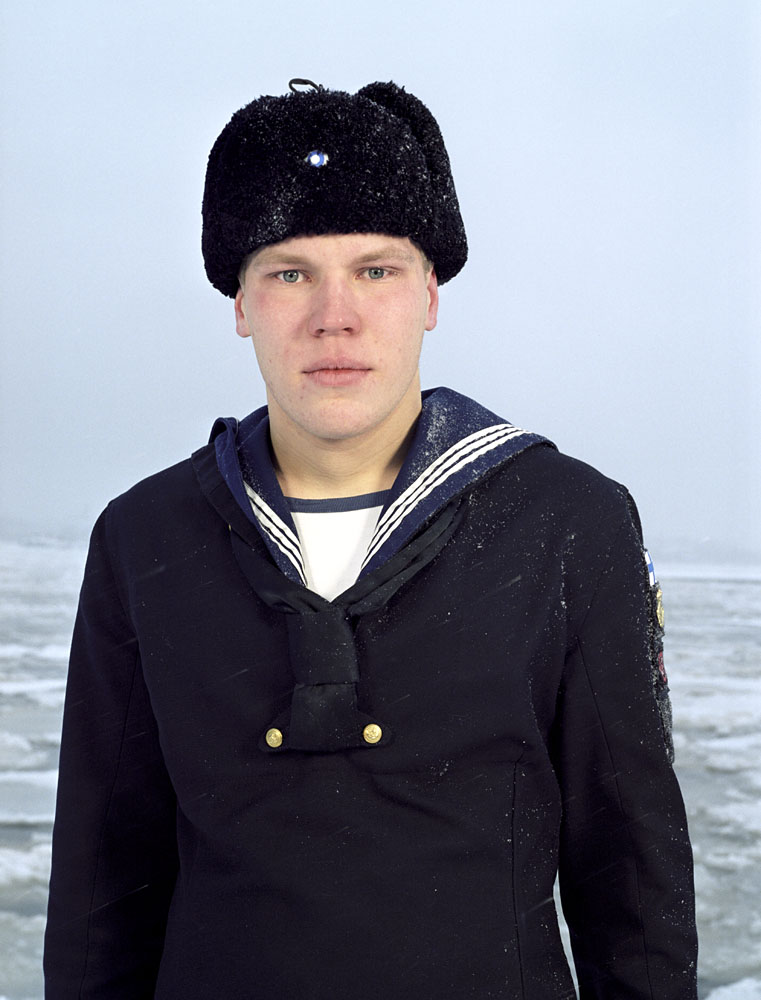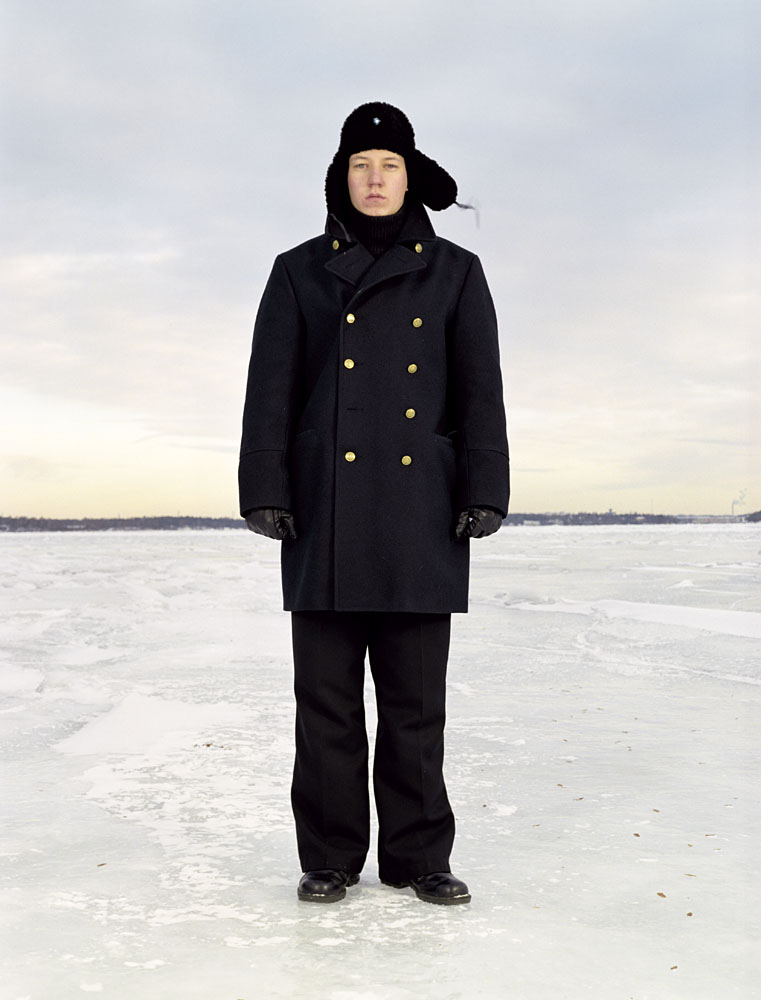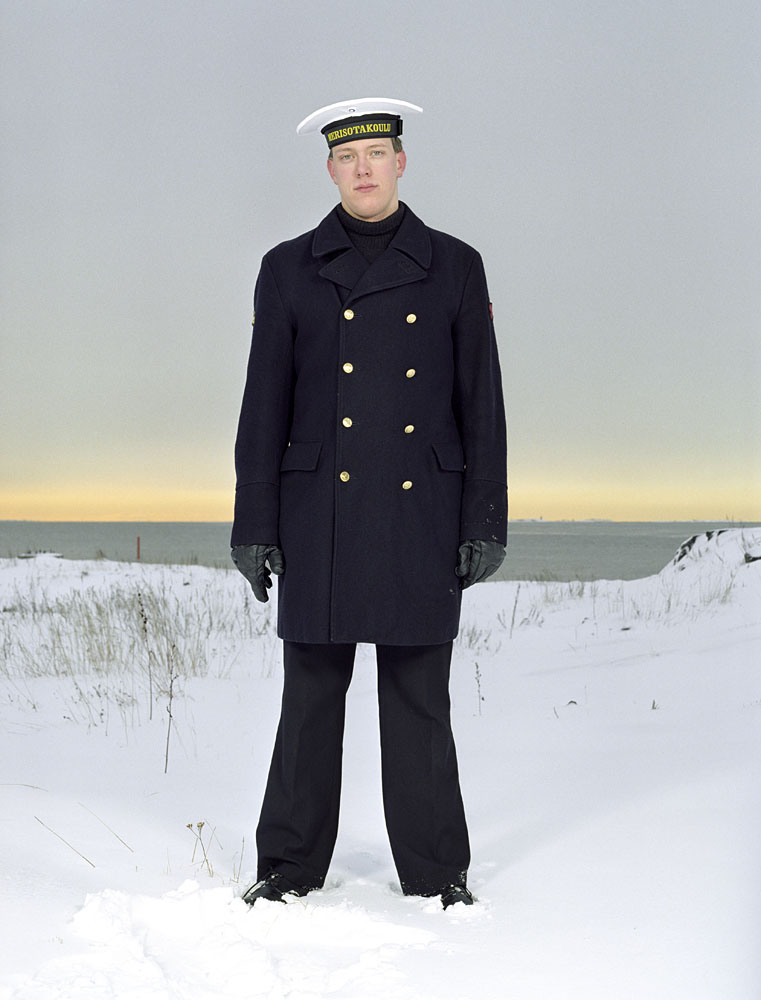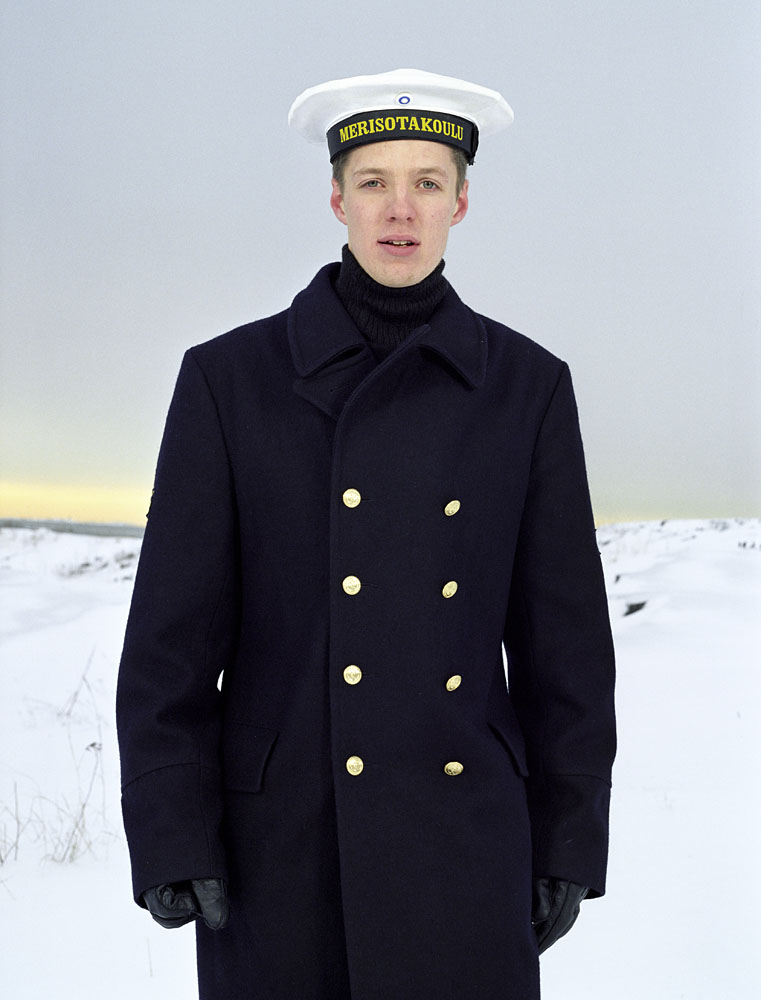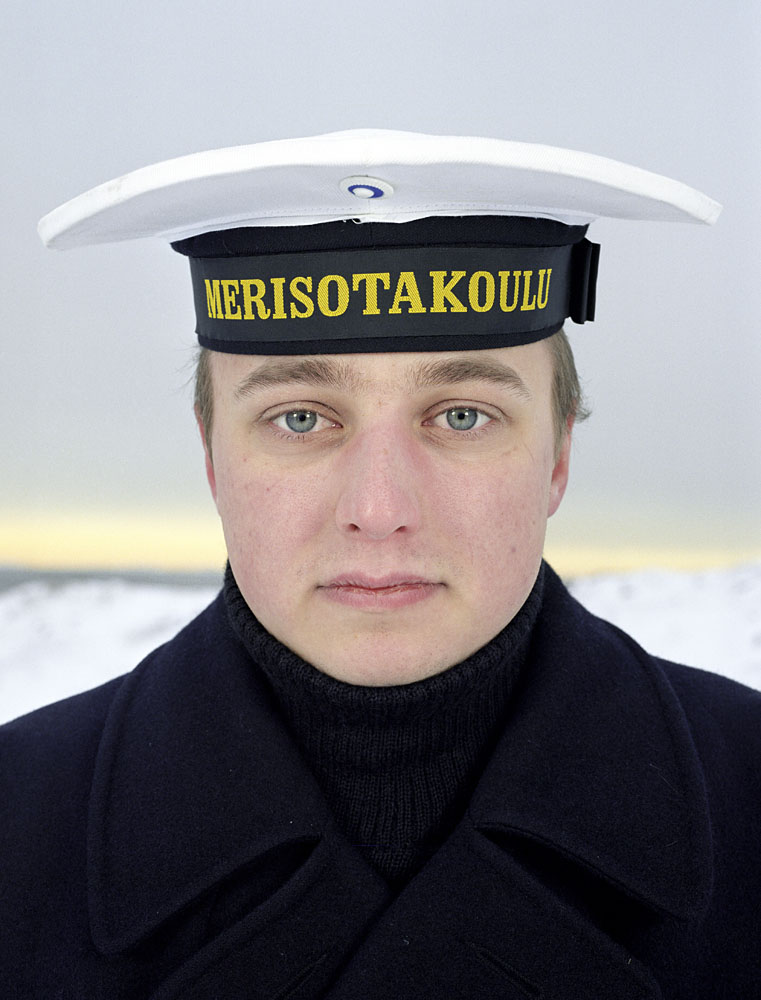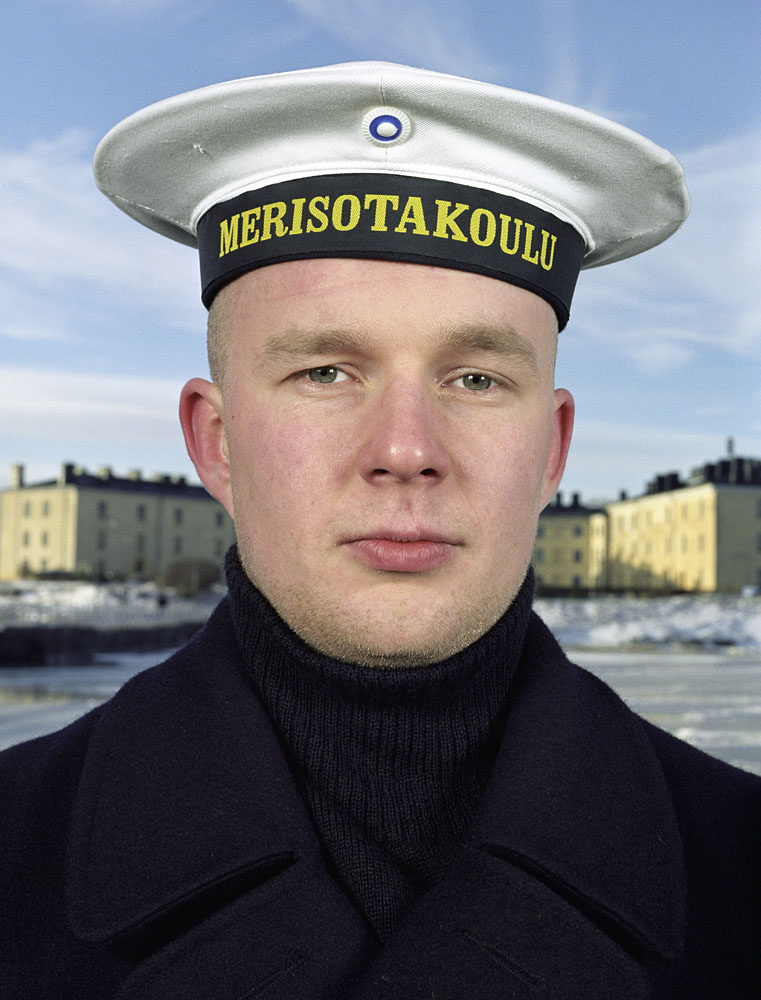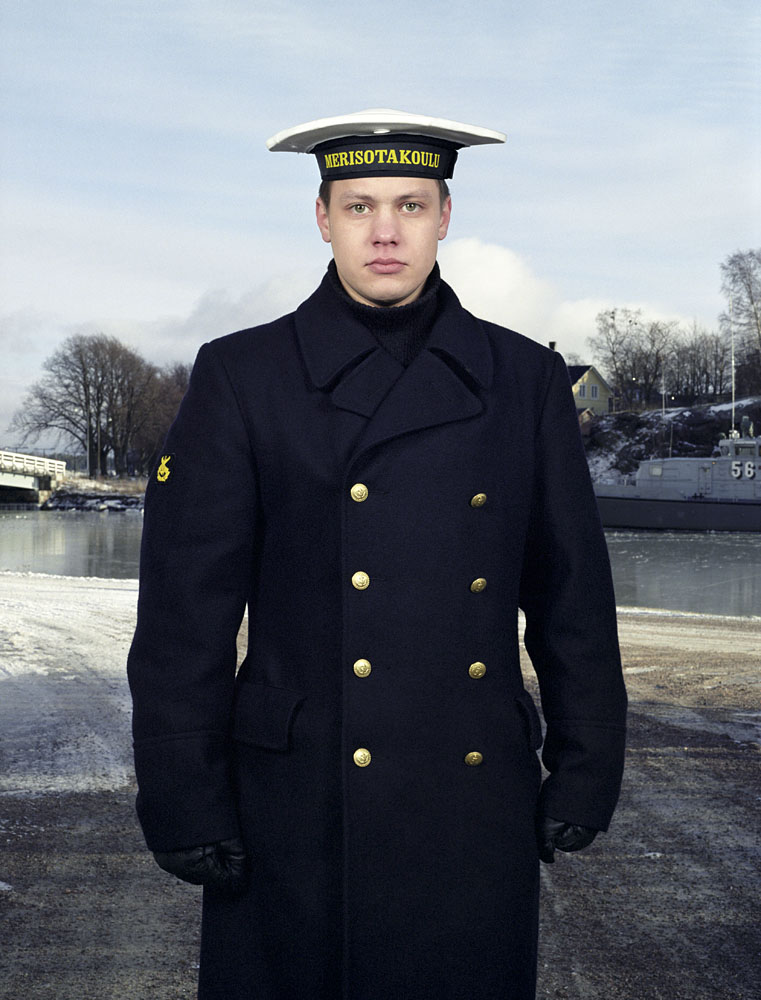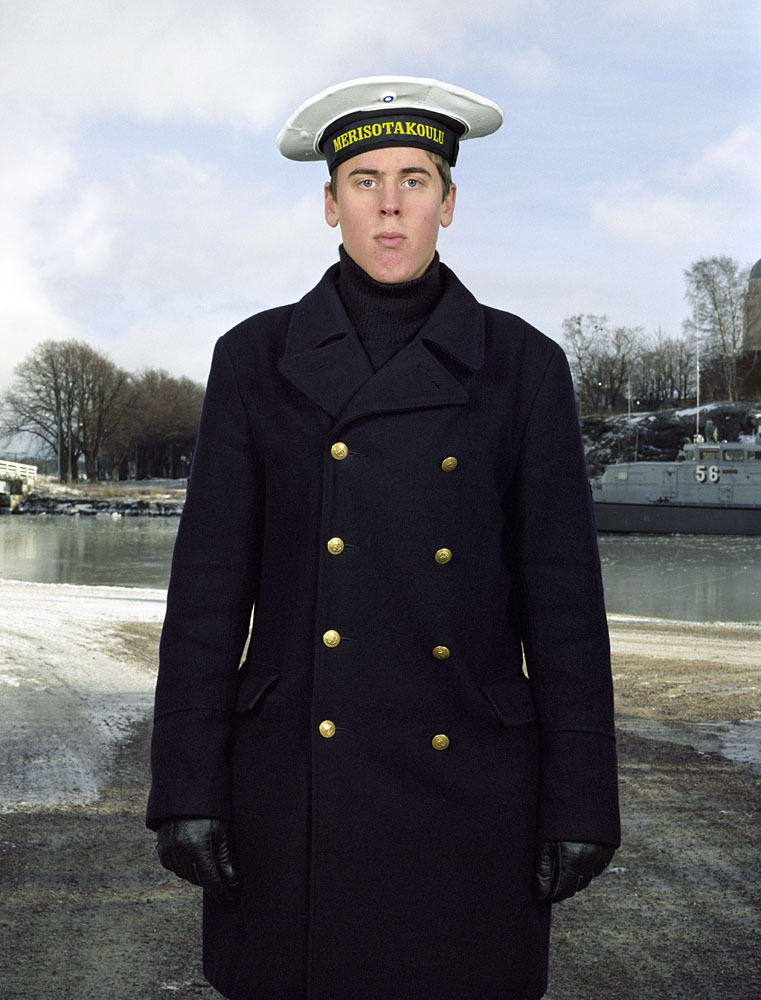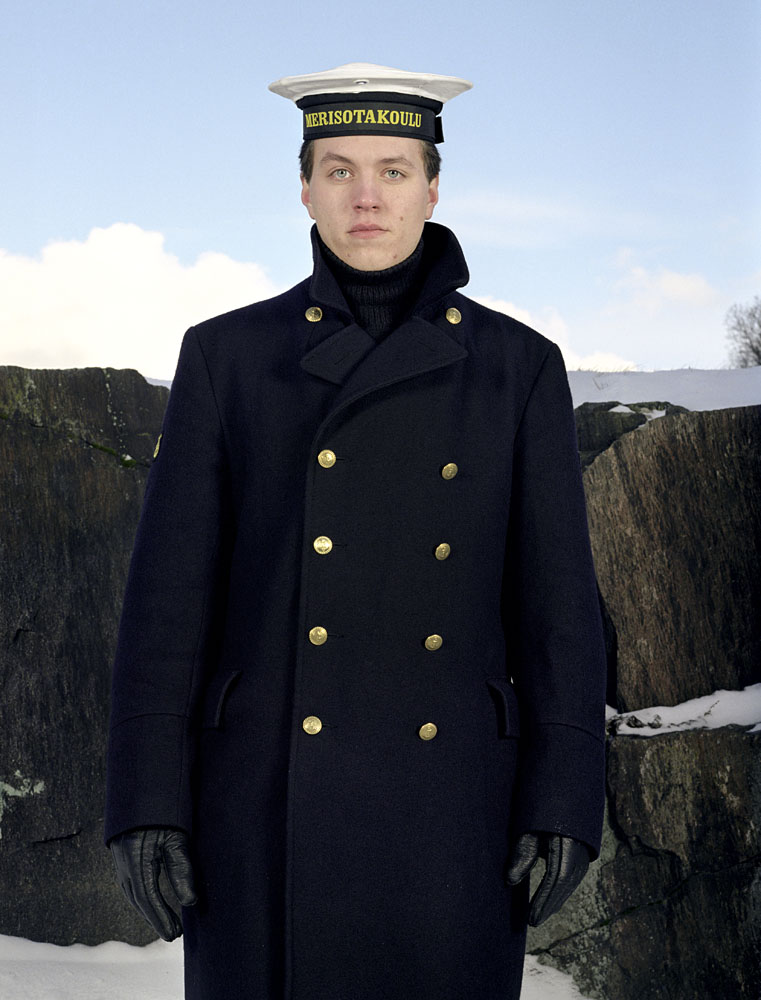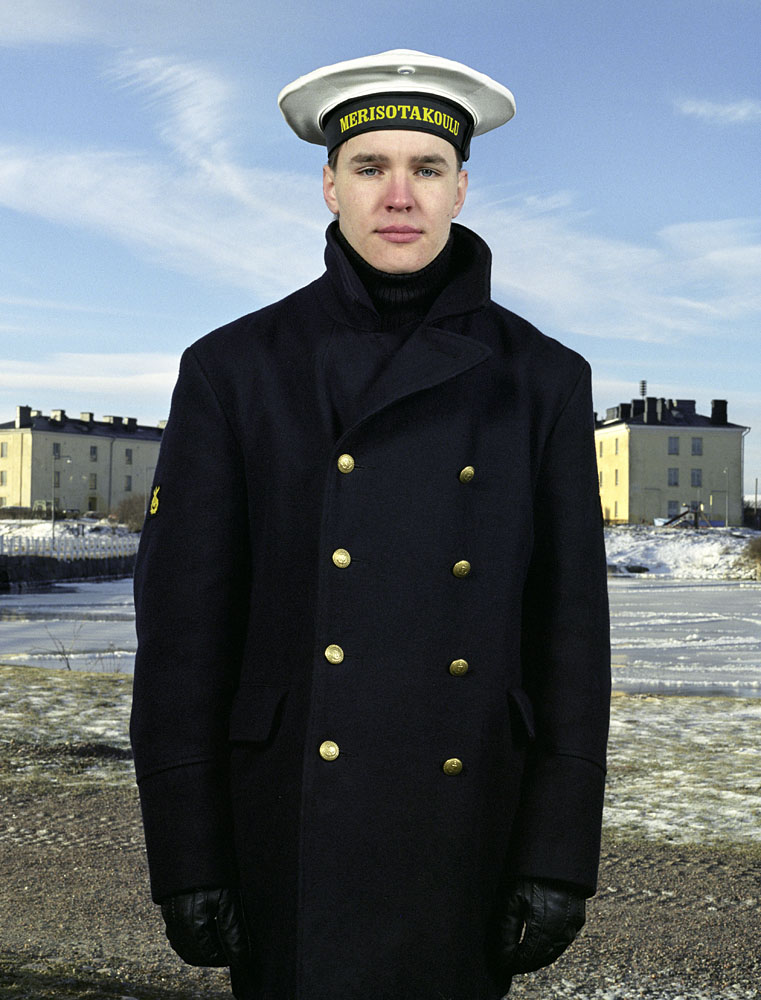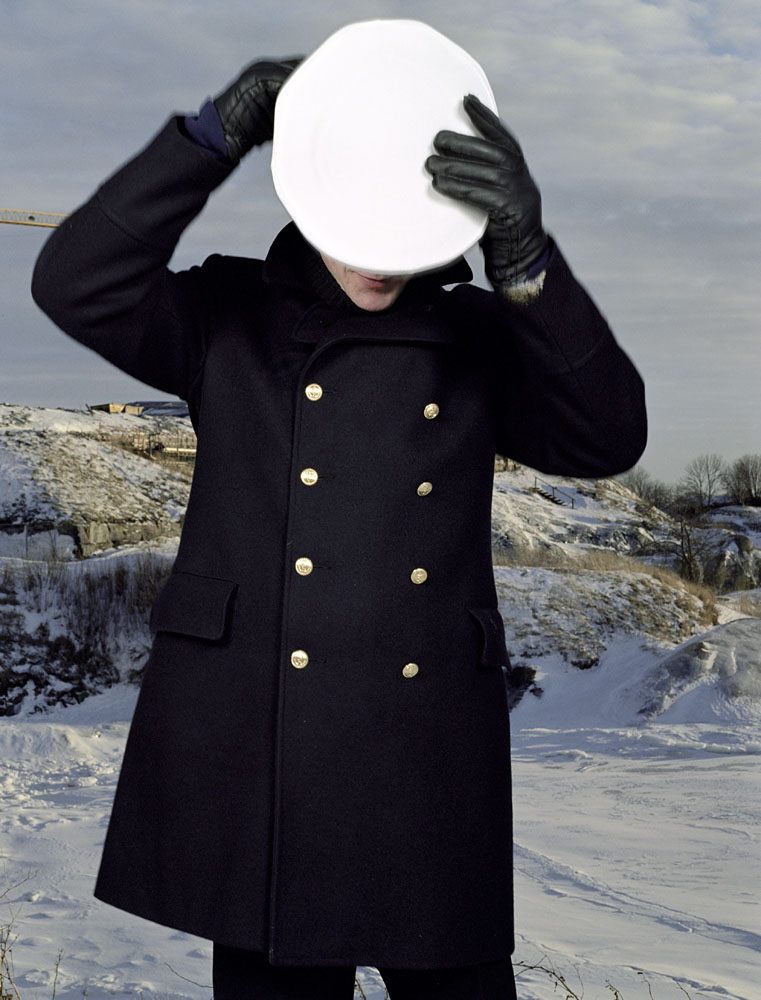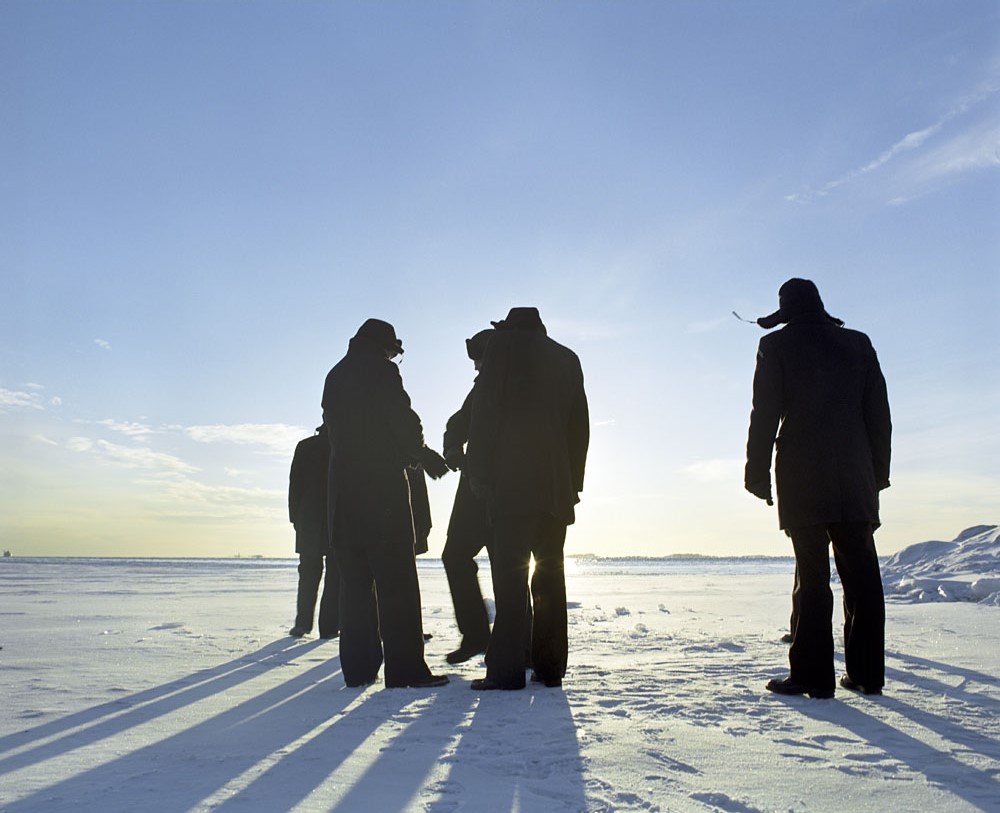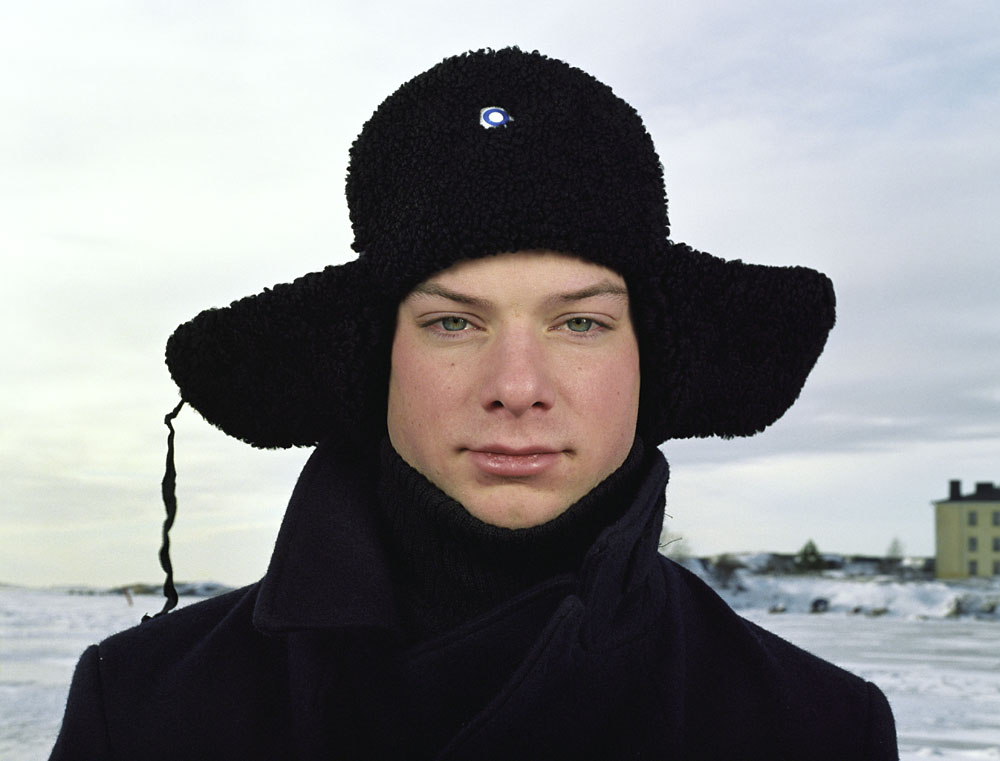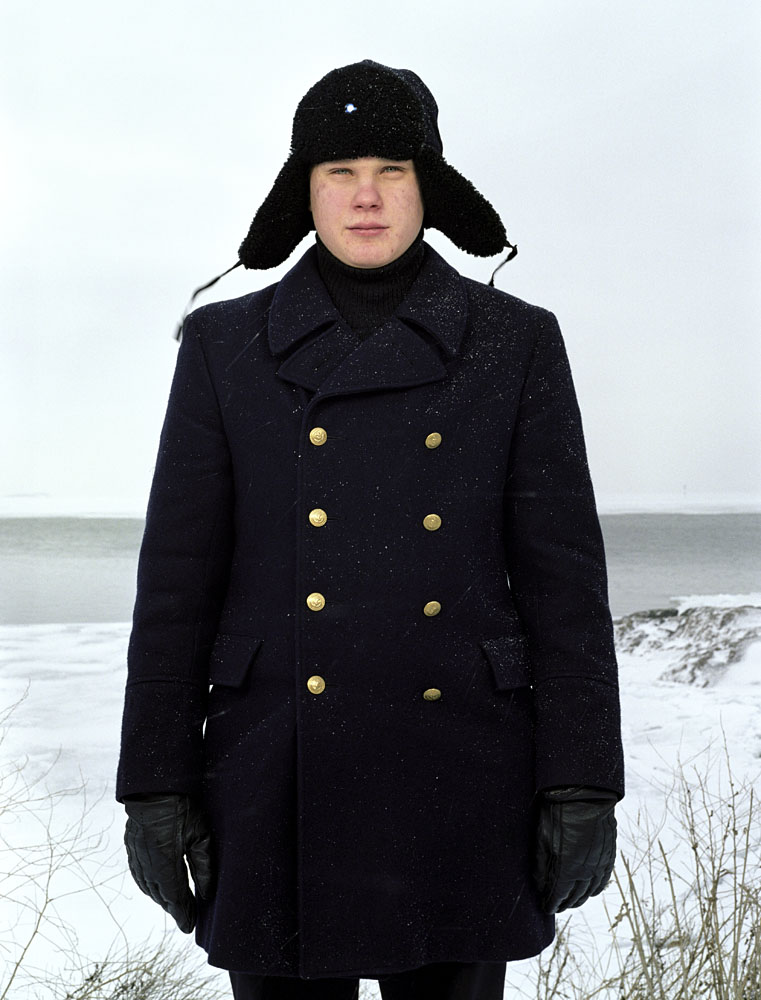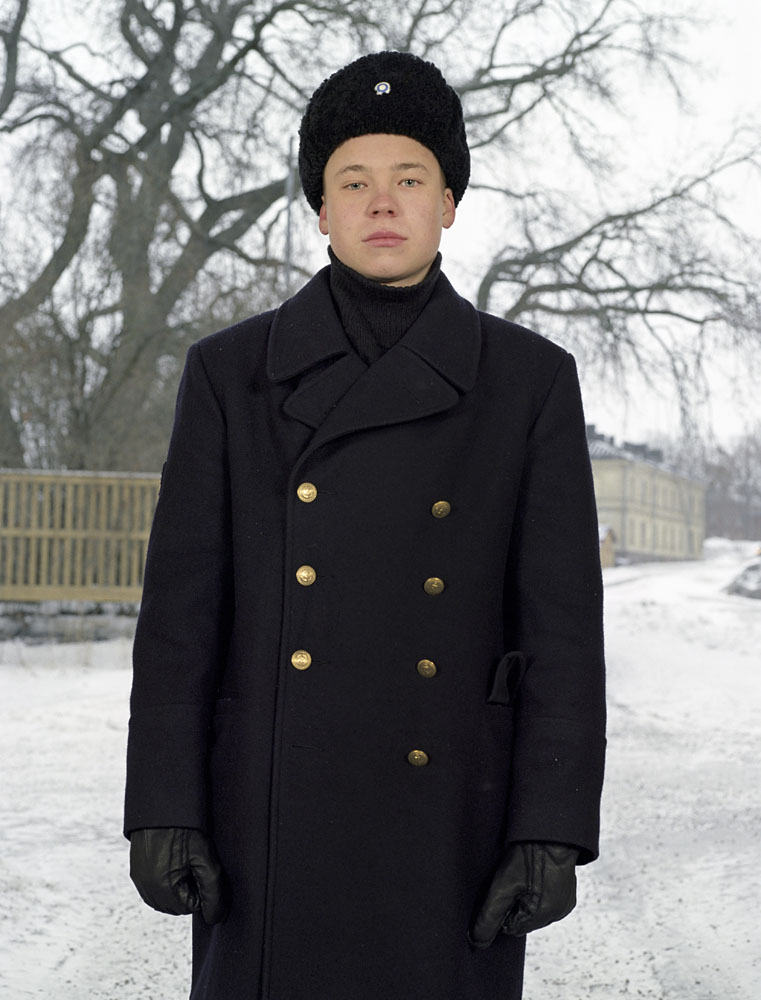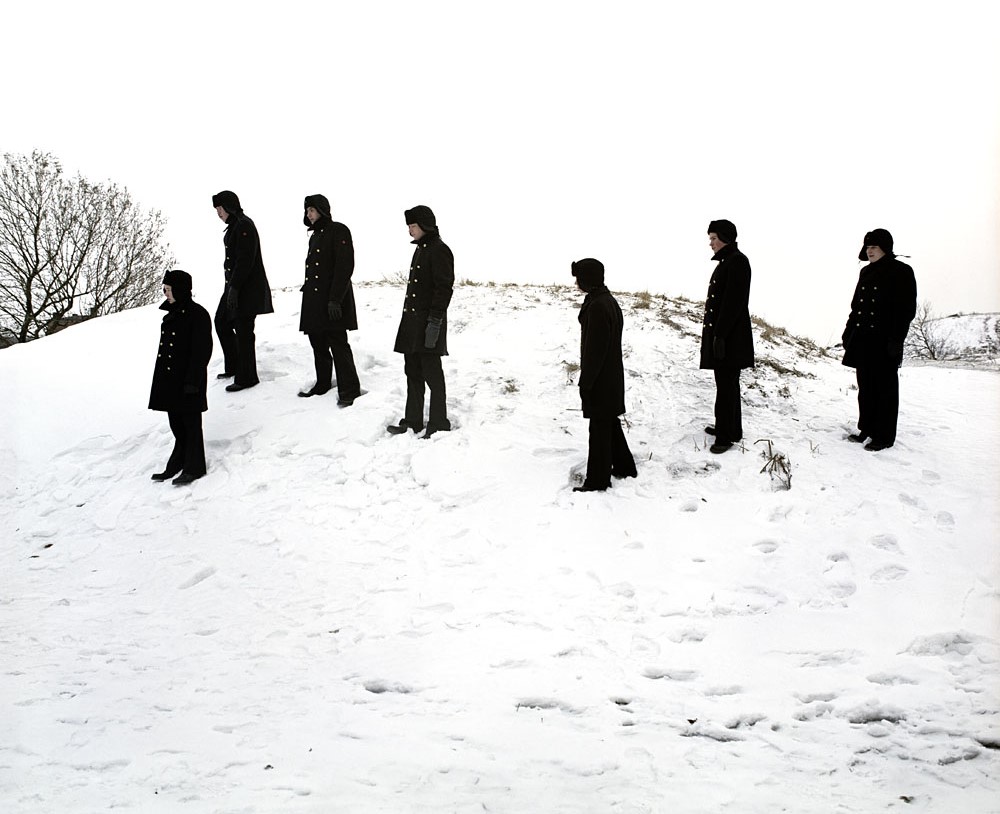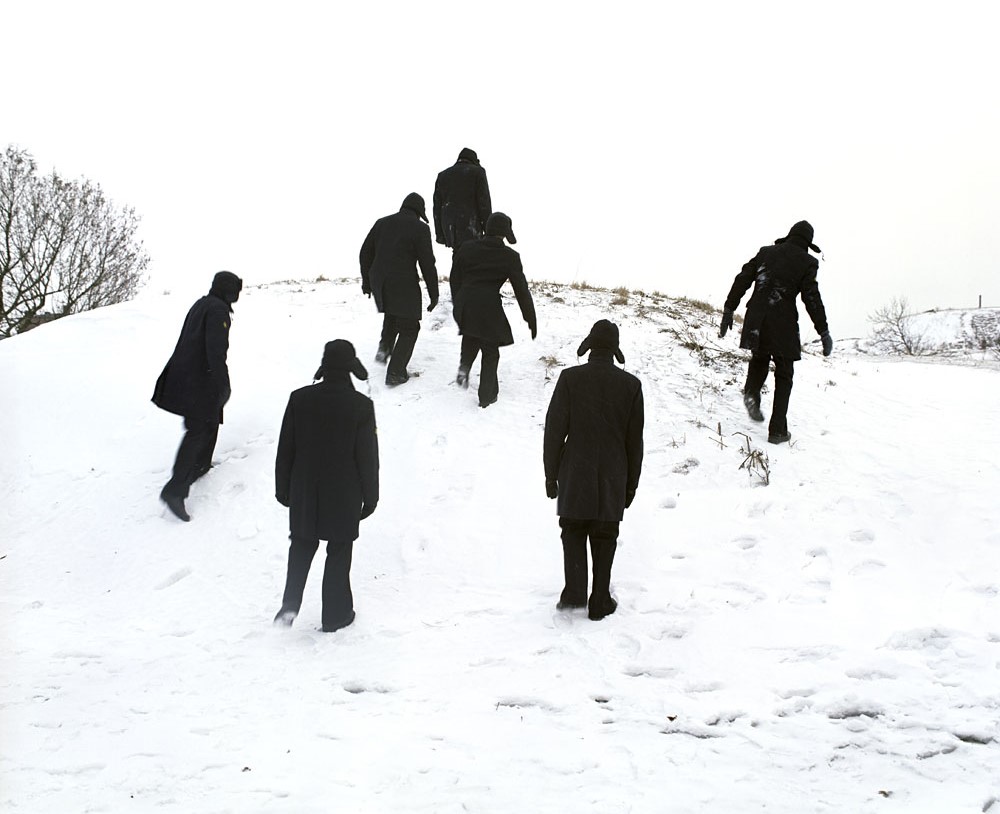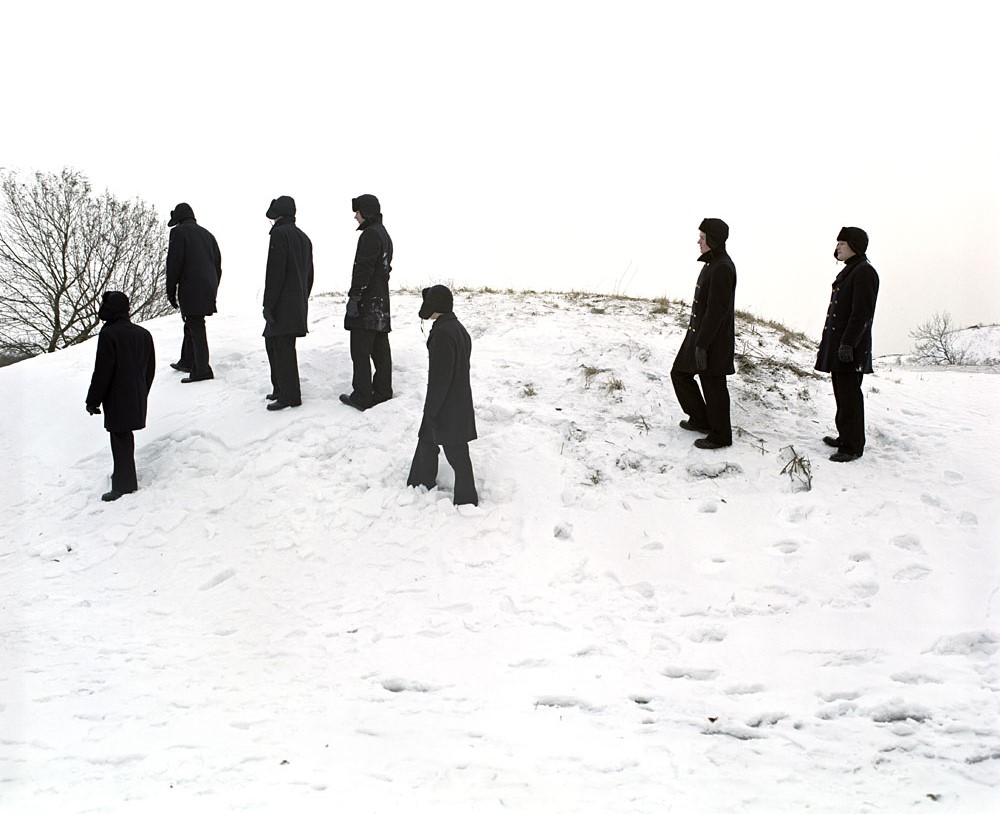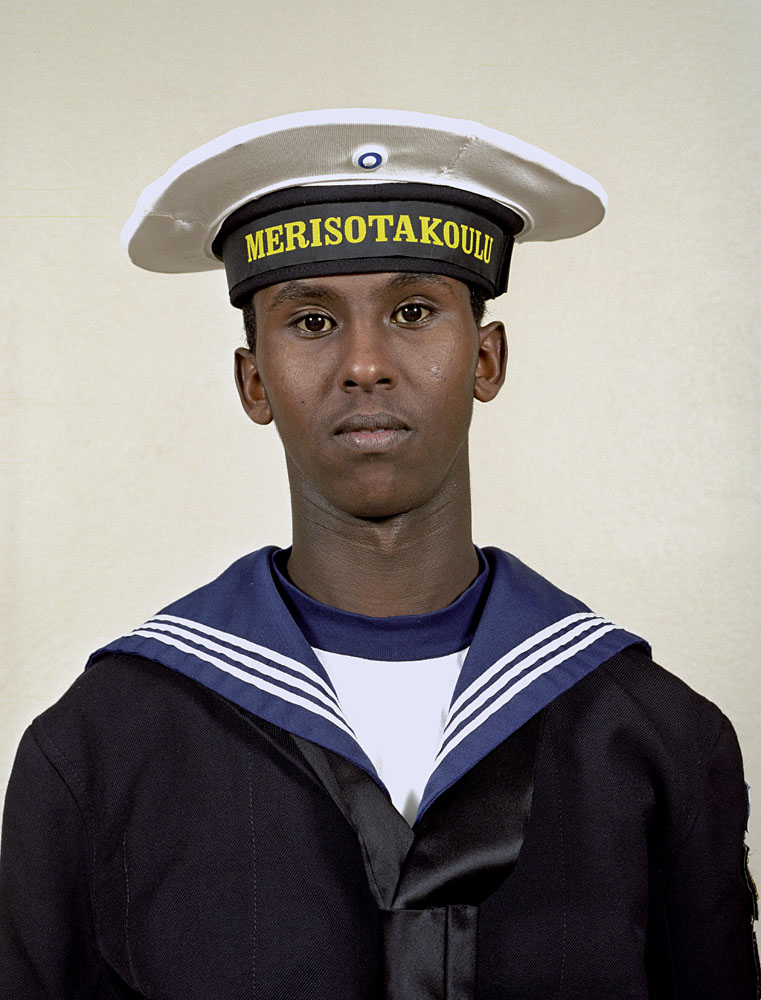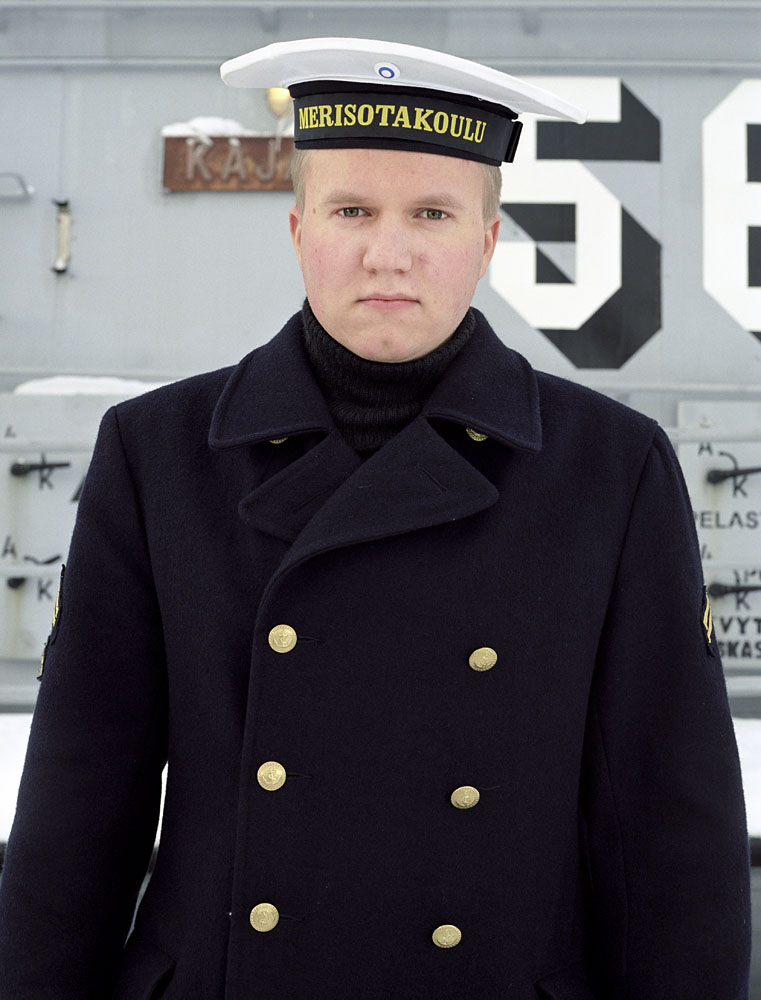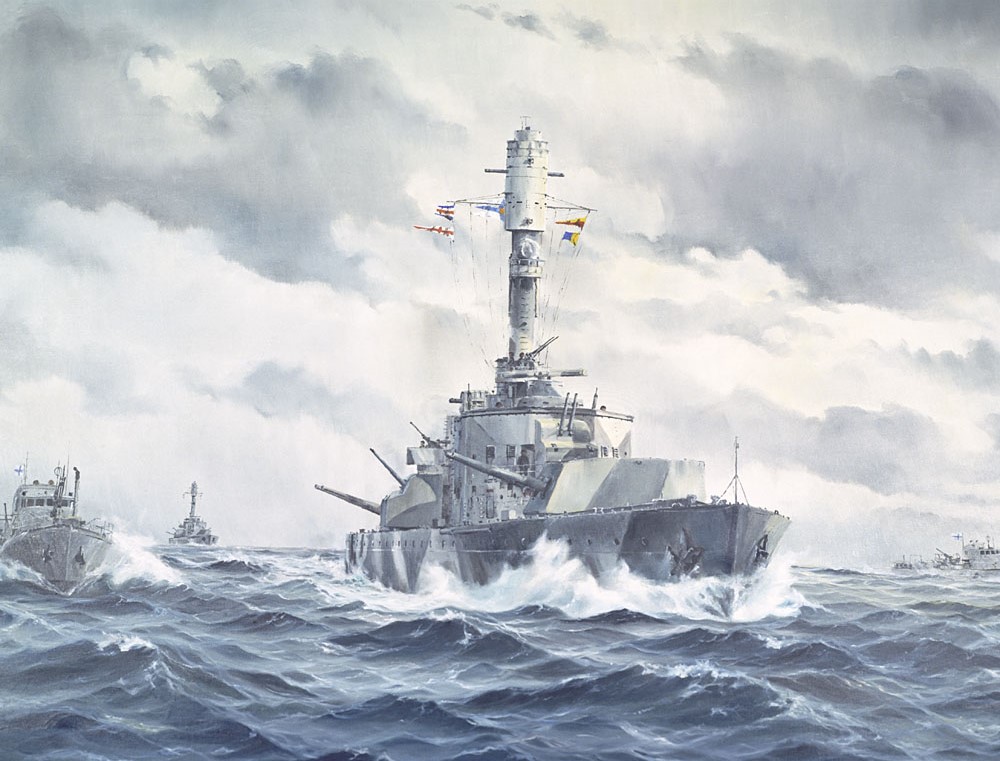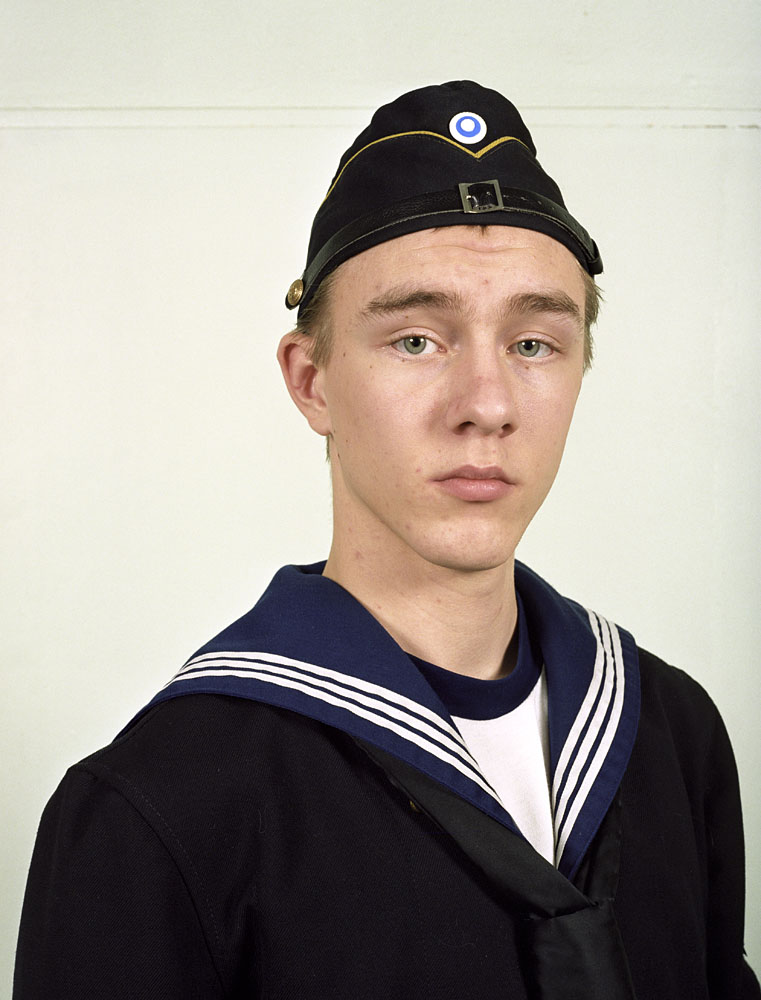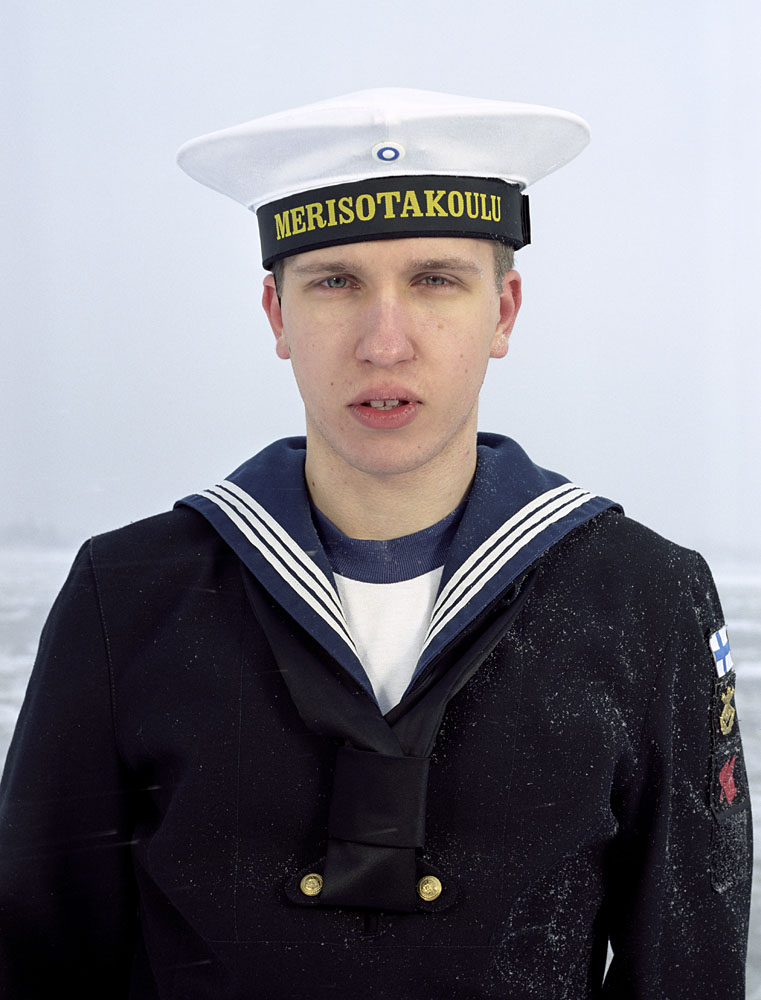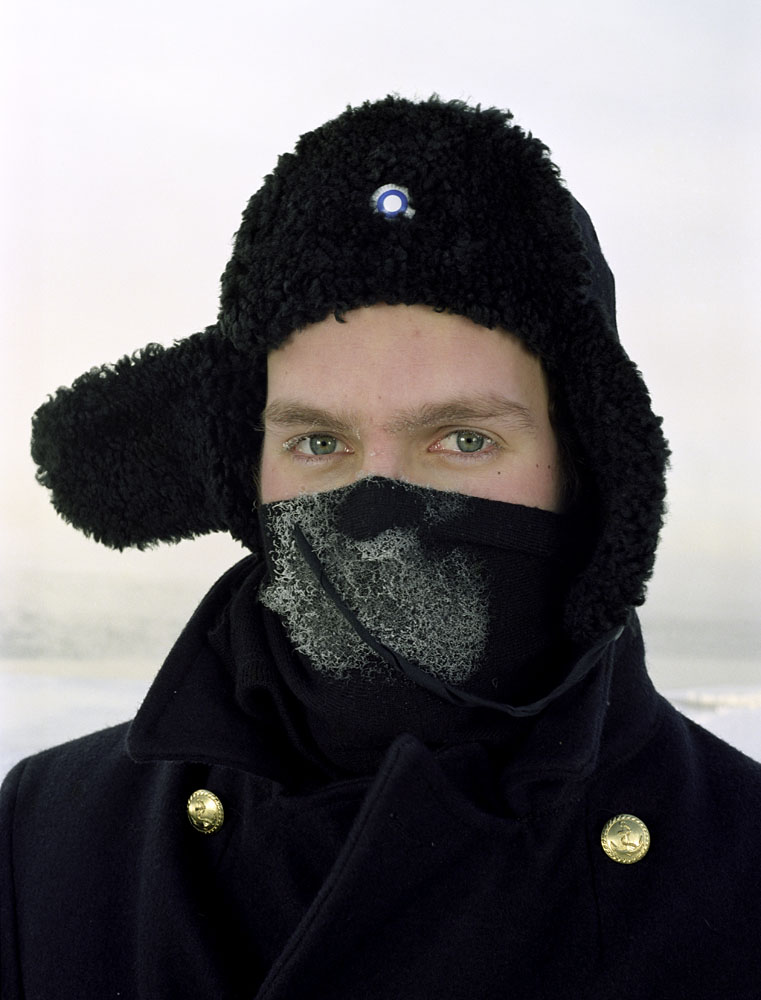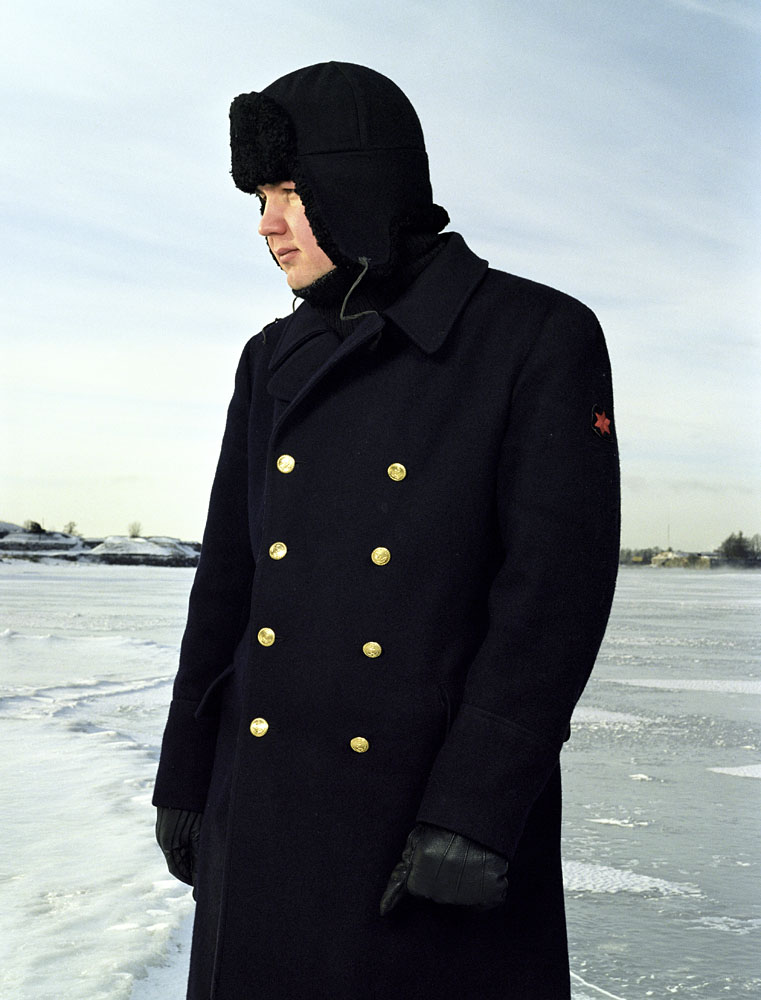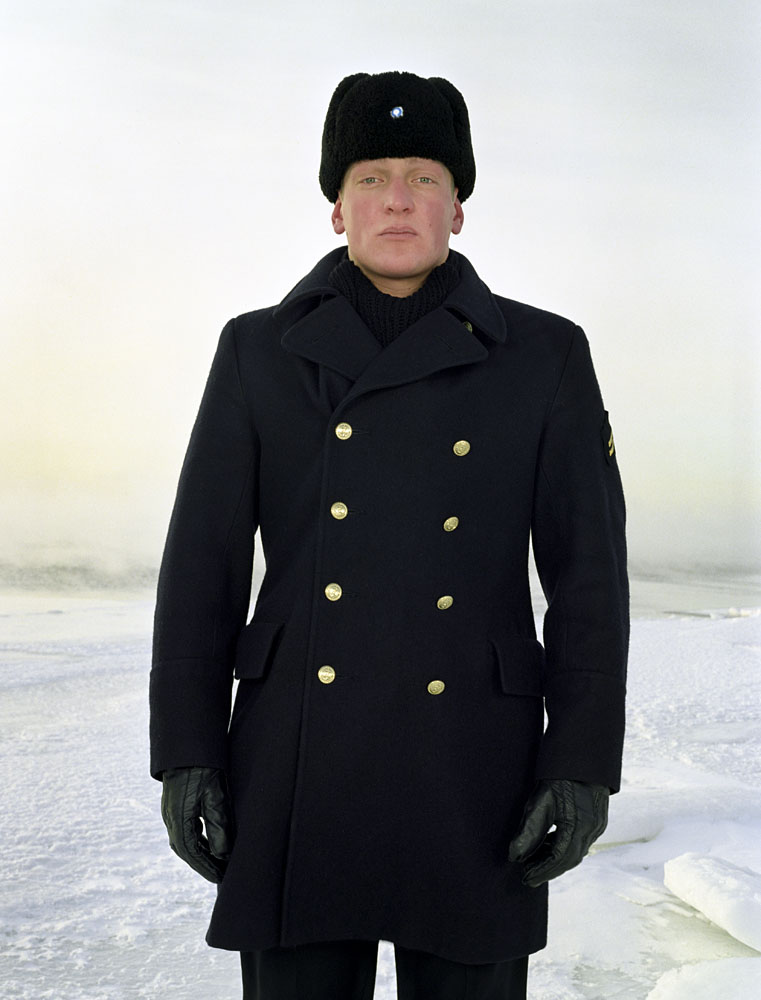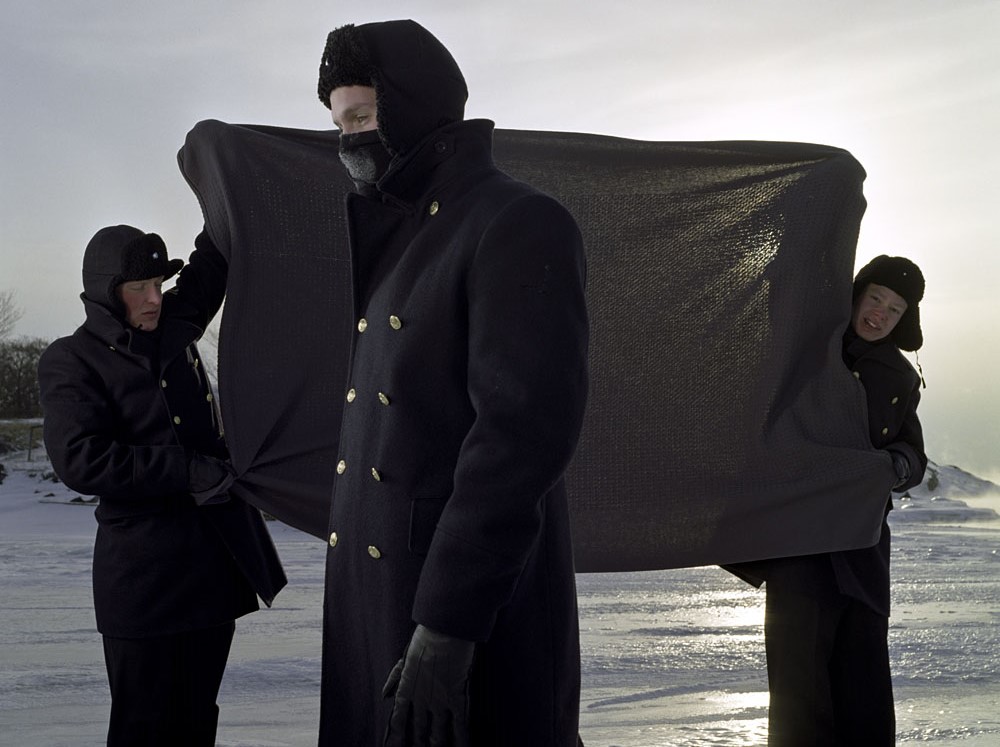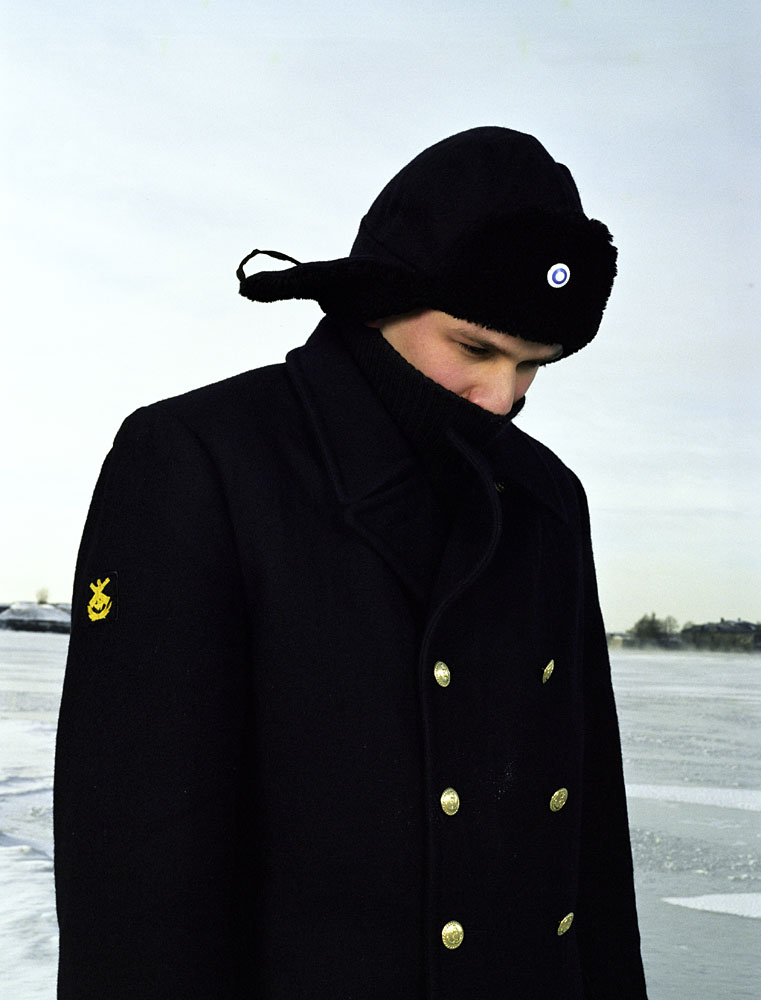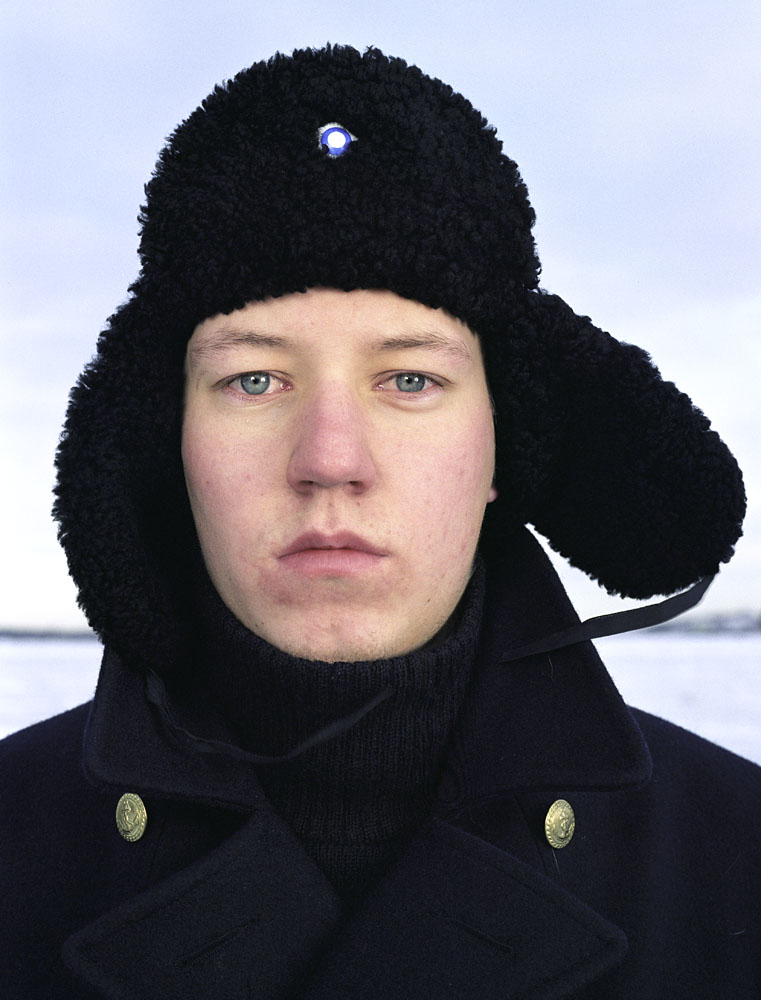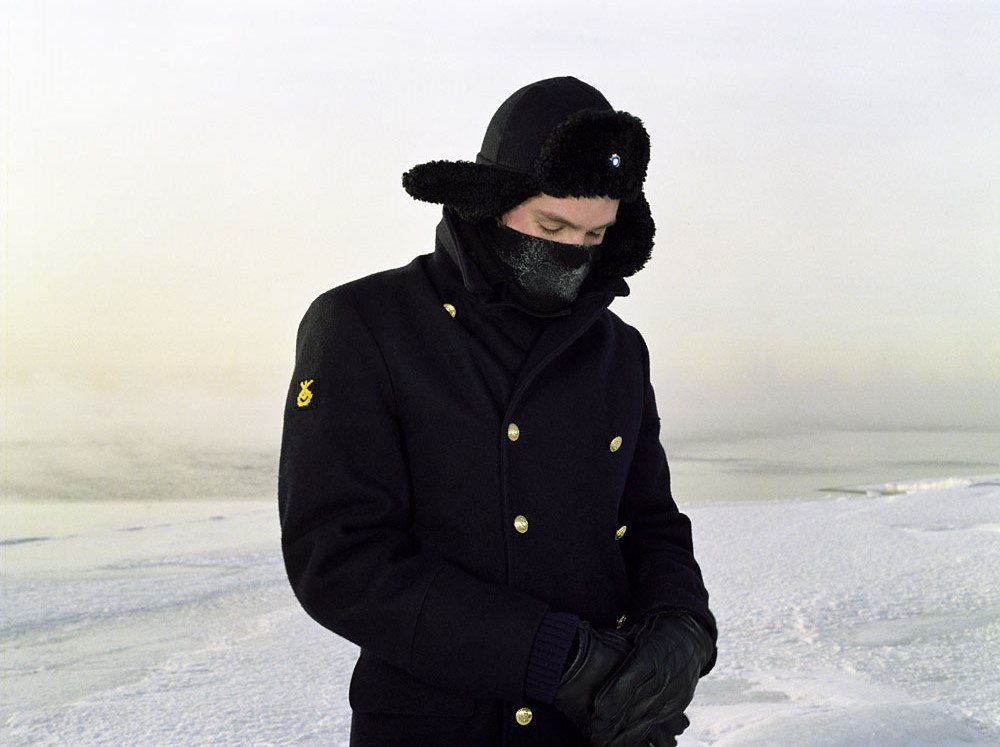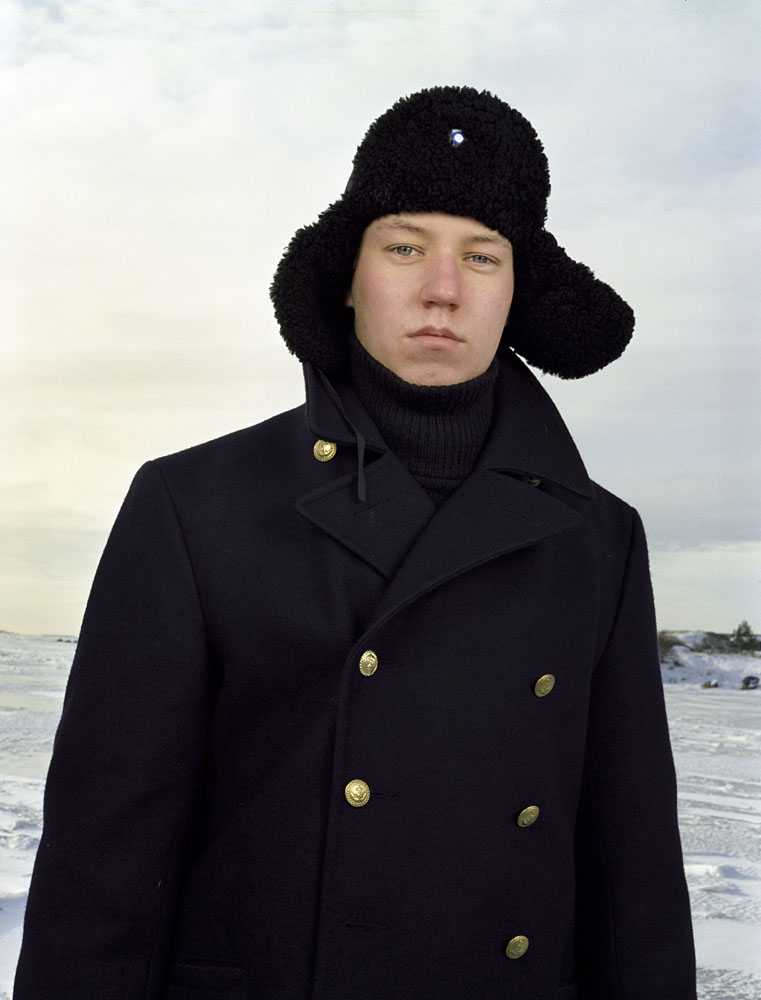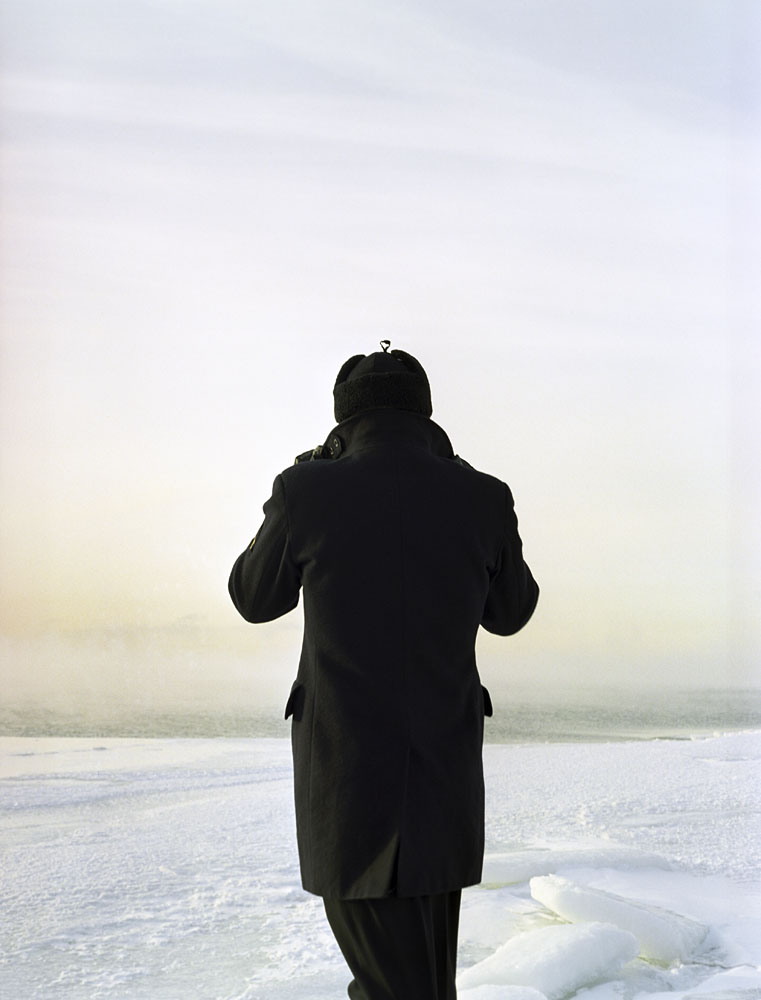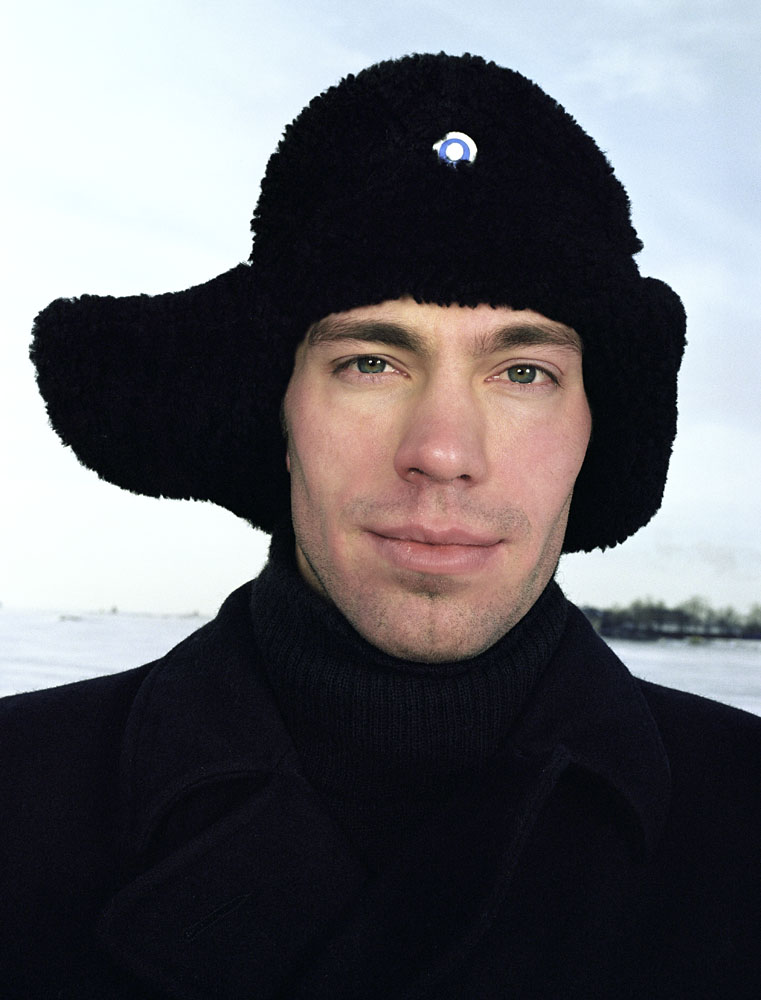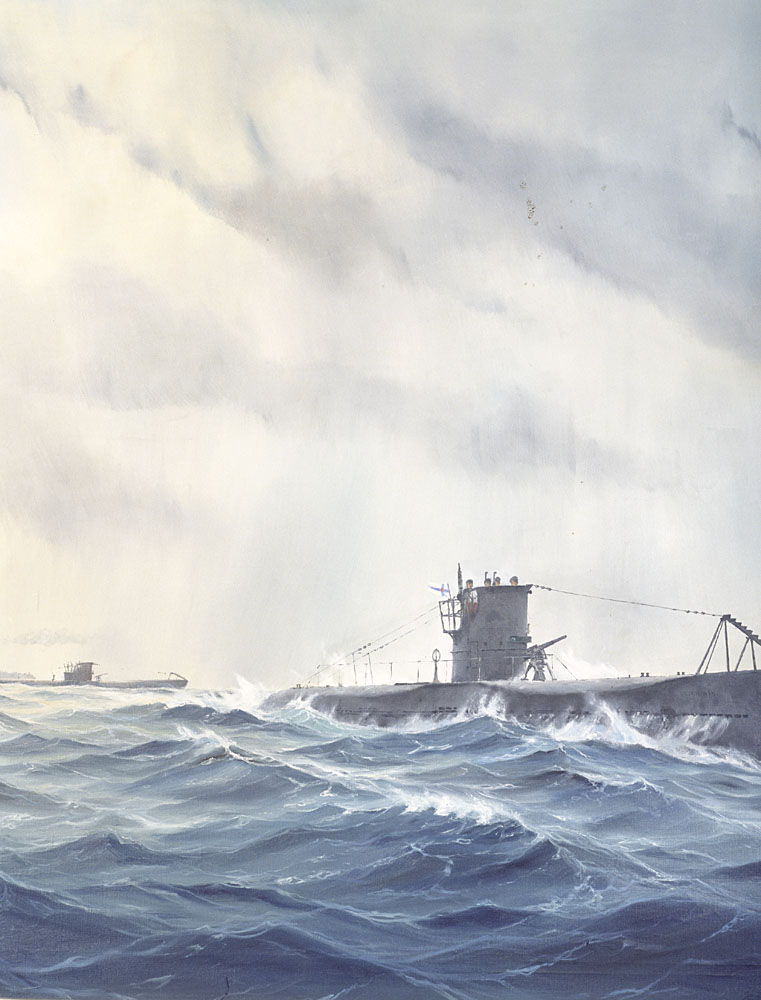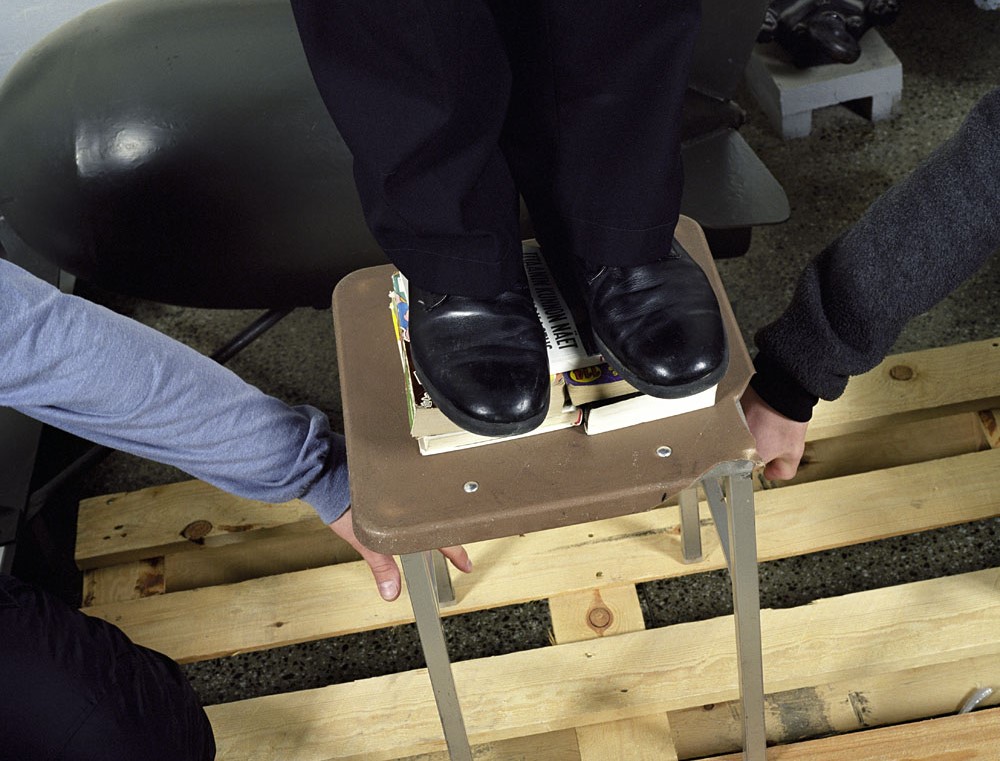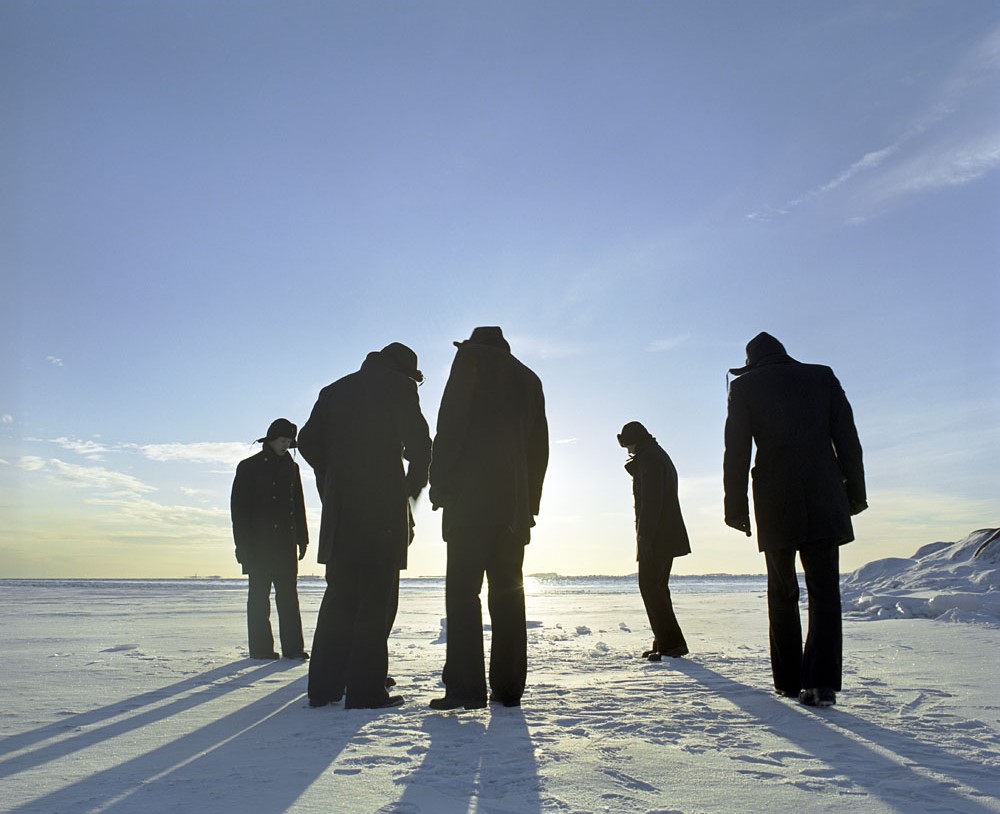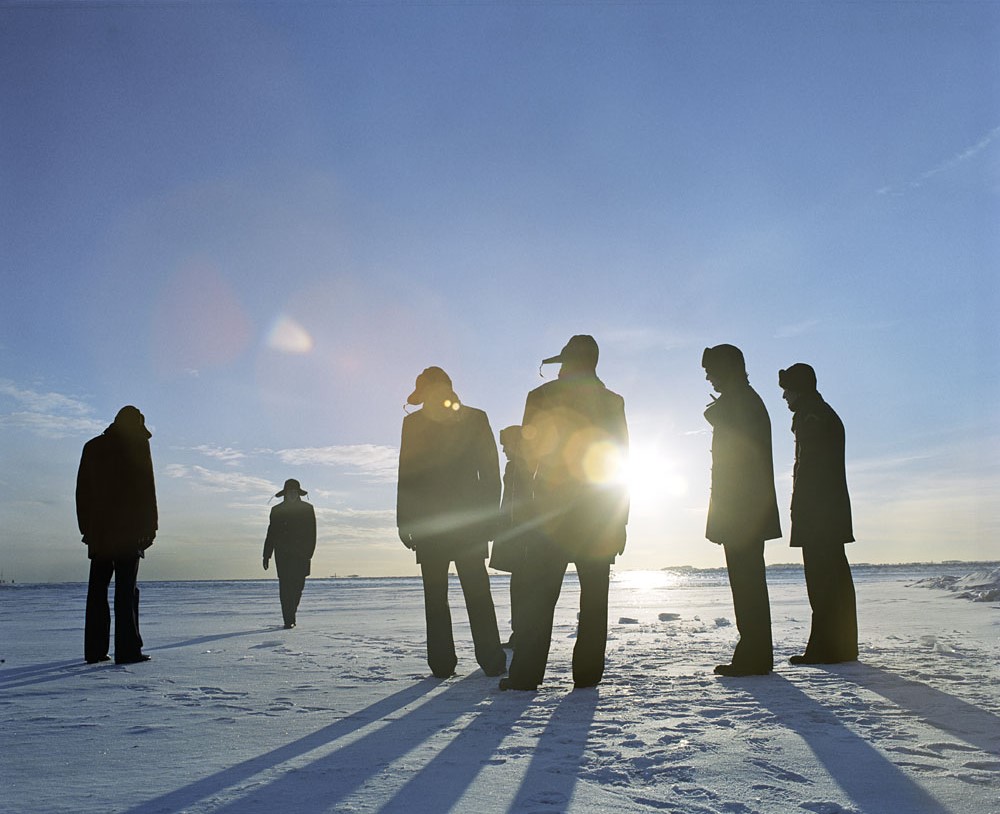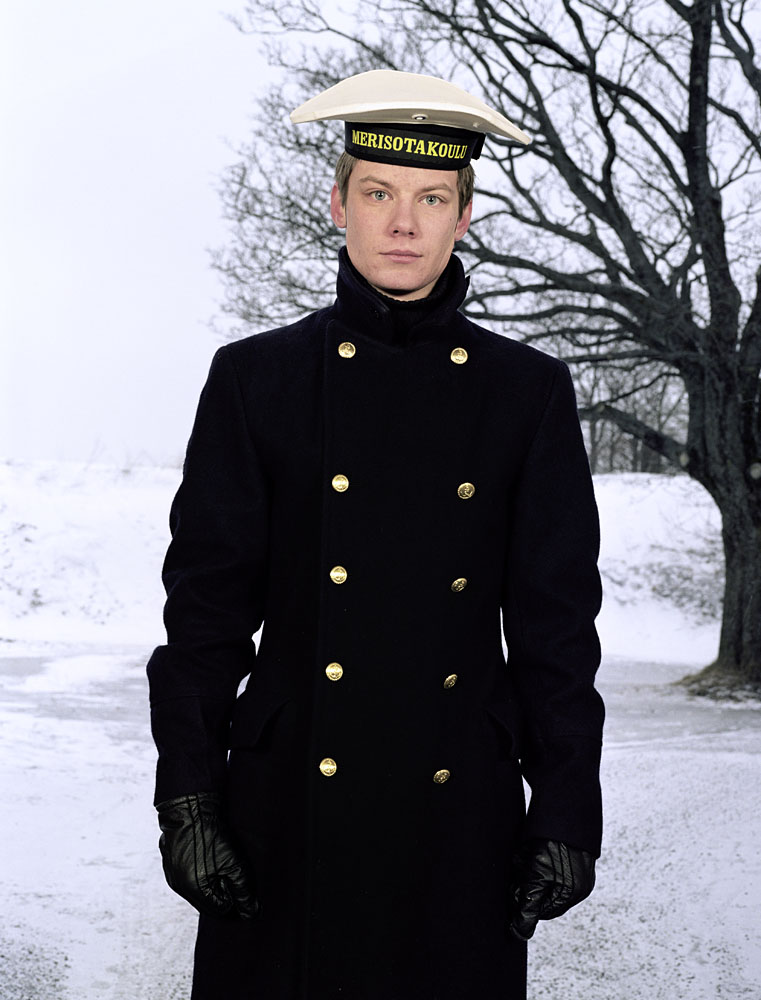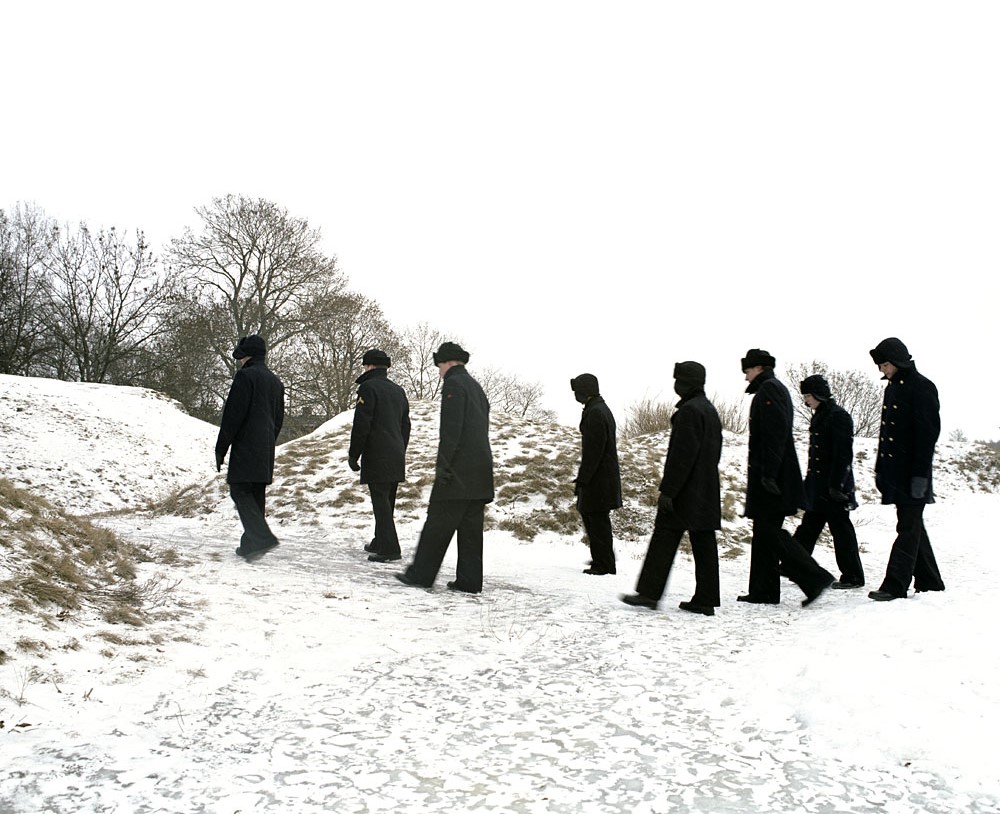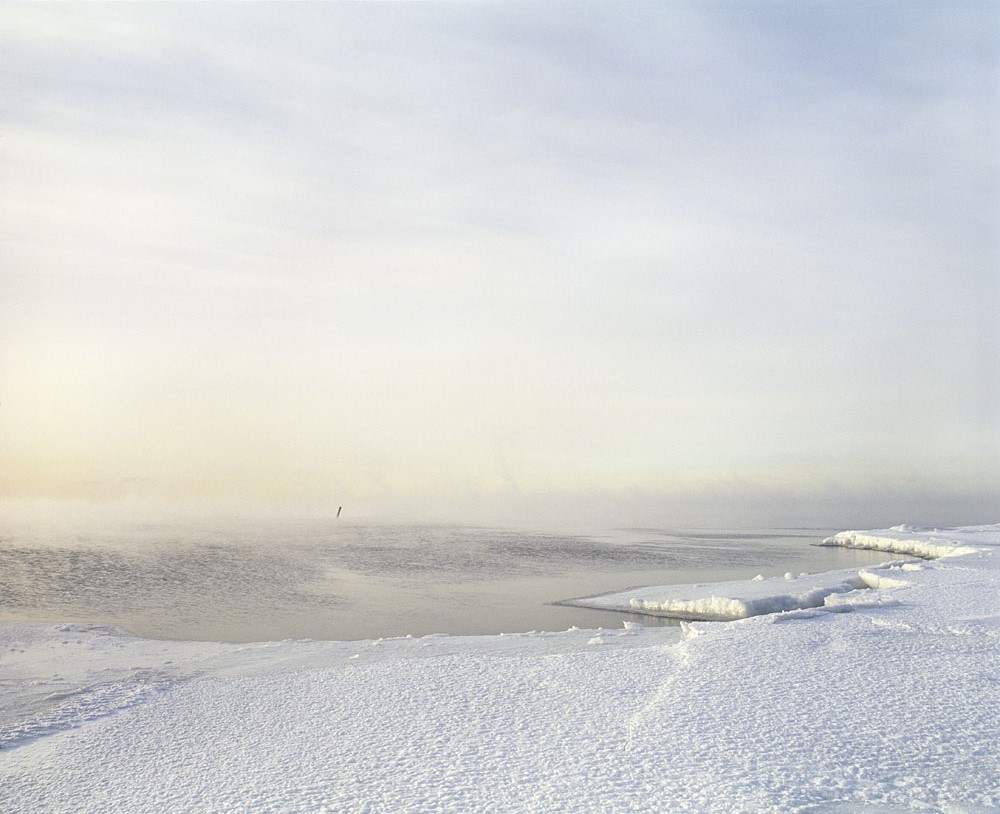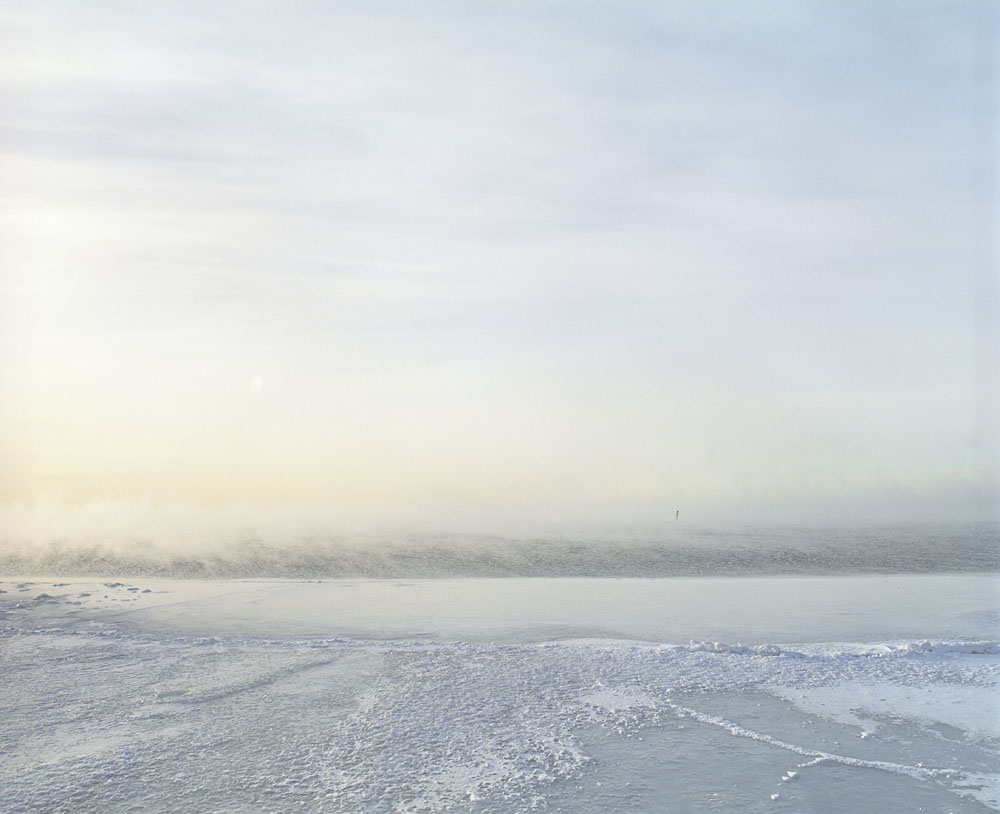The Merisotakoulu project began halfway between Stockholm, where Fréger had just finished the Glögg series, and Helsinki, where he was in the early stages of the series Steps. On his way across, he met a group of conscripts from the Finnish Navy, who were celebrating their imminent demobilisation with a binge on the ferry. Following this first contact, he went to the Finnish naval academy at the Suomenlinna naval base, a fortress inspired by the constructions of the French architect Vauban and now attached to the territory of Helsinki. He took 15 or 16 photographs during the winter of 2002 and the rest during the very cold winter of 2003. The temperature was below 35°C and the popular myth was that it was possible to walk across the ice to Russia. The essence of this series is the cold and the light. Fréger decided to alternate interior shots, sometimes taken in front of the realist paintings of ships on the walls of the Academy, with outdoor shots on the ice in vast stretches of immaculate white. The sailors bodies, photographed in a uniform which is basically a thick, off-black, woollen reefer jacket, occasionally topped by a fur hat in the same colour, are like frozen rocks. In the polar landscape, only their black silhouettes stand out. Once again, Fréger departed from his protocol: he photographed these bodies twisted at an angle, three-quarters on. And stepping back even further, he made a shot of the whole group making its way towards the horizon. The contrast between the tight focus shots of those strong bodies and the frail silhouettes walking idly on the ice floe creates a slightly humorous effect. The photos are explicit; they show how they were made – like, for example, that photo of a sailor’s pair of feet on a stool, the stool itself standing on a wooden pallet, and everything held in place by shipmates outside the shot. By remaining within the codes of the image of the heroic sailor, yet, at the same time, allowing the spectator into the wings, as it were, of the mise en scène that he stages in order to achieve the desired effect, the photographer deconstructs the mythological pose, as a semiologist might do. What we have here are, of course, images of sailors, but we are also made aware that portrait photography is a genre in which the model is frozen in a kind of fantasised representation.
